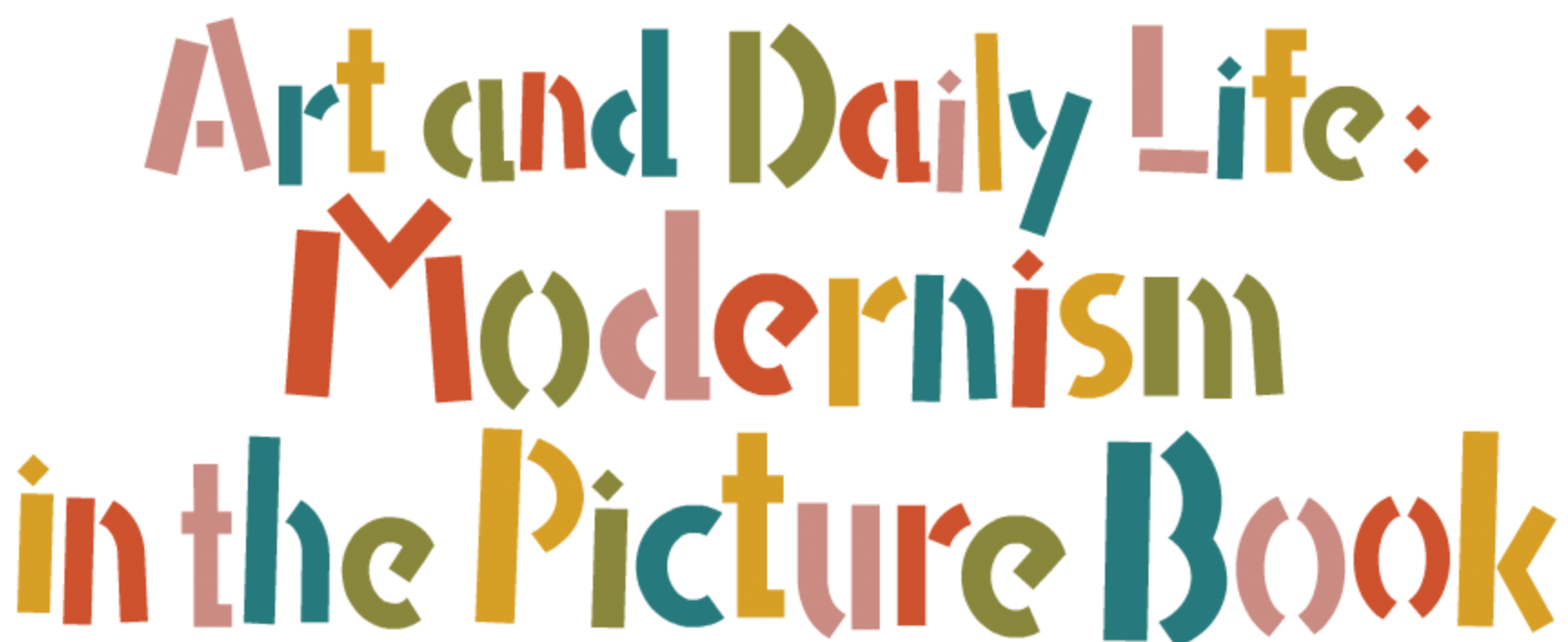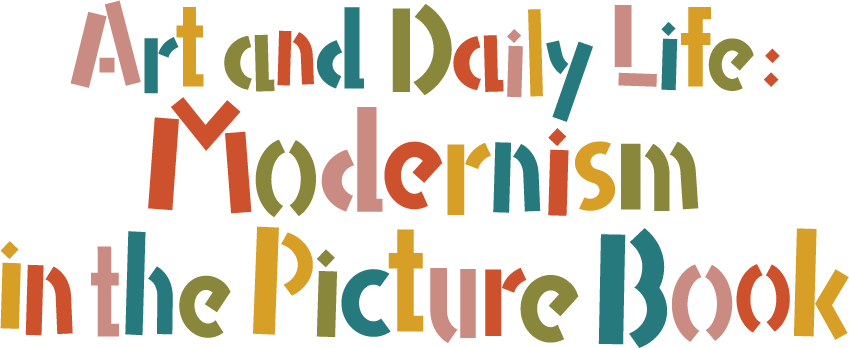本文
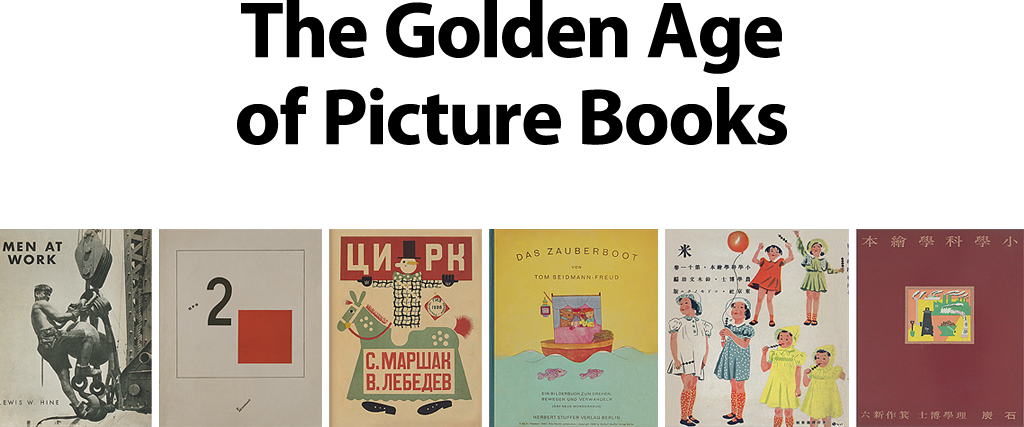
Audio controller
Note: The following sentences are excerpts from the narrations.
(♪) The period after World War I, from the 1920s and into the 1930s, was a golden age in the world children's books. The modern metropolis and startling advances in machine civilization emerged as the symbols of a happy future.
(♪) People began to travel the world as never before, on great ships crisscrossing the oceans and on railways extending across continents. Free interchange began in many spheres of human activity.
(♪) Photo-techniques that had rocked the world of art in the nineteenth century spread as a new medium among the general populace, opening up the era of the reproduction art that continues even today. (♪)
| Year | Event and Picture Book |
|---|---|
| 1905 | Henri Matisse, André Derain and the Fauvists |
| 1907 | Pablo Picasso’s Les demoiselles d'Avignon |
| 1909 | Filippo Tommaso Marinetti’s Futurist Manifesto |
| 1912 | Paul Kleé joins Blue Rider (der Blaue Reiter) group |
| 1914 | The First World War begins |
| 1915 | Kazimir Malevich calls his style “suprematism” |
| 1917 | Russian Revolution of 1917 |
| 1918 | Tzara, the Dada Manifesto |
| 1919 | Weimar Republic established Bauhaus founded ![Front cover of “Sekai dowa hogyokushu” [A Treasury of World Children’s Stories]](../_media/image/commentary/parts/SEEN6-4_j.png) Sekai dowa hogyokushu [A Treasury of World Children’s Stories] |
| 1922 | In Italy, fascist government formed under Benito Mussolini Union of Soviet Socialist Republics established 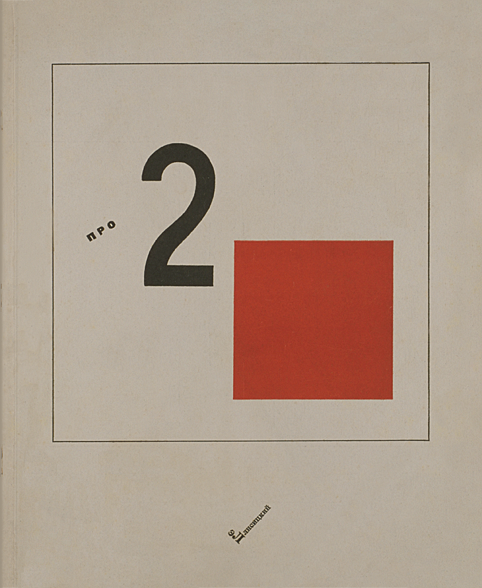 About Two Squares 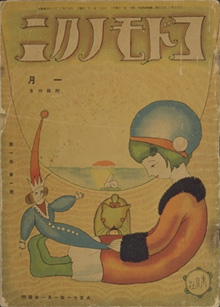 Kodomo no kuni magazine |
| 1924 | André Breton, the Surrealist Manifesto Stories of Paradise |
| 1925 |  The Circus  Yesterday and Today |
| 1928 | 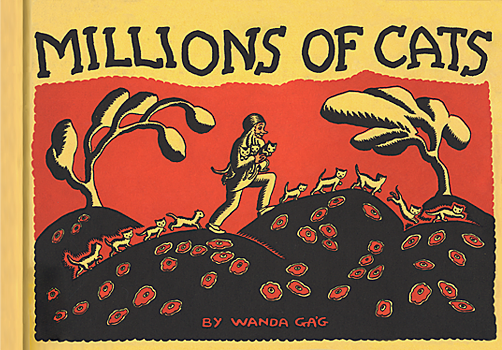 Millions of Cats |
| 1929 | Great Depression begins in New York Joseph Stalin regime established.  The Magic Boat 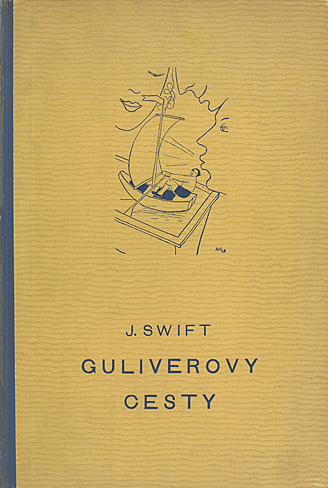 Gulliver’s Travels  Ivan Ivanovich Samovar |
| 1931 | Manchurian Incident marks beginning of Japanese aggression in China. |
| 1932 |  Men at Work |
| 1933 | Adolf Hitler takes power Bauhaus closed by Nazis The New Deal begins |
| 1934 |  My Ball |
| 1937 | Second Sino-Japanese War begins Rice  Coal |
| 1939 | World War II begins |

Gulliver’s Travels
Guliverovy cesty
By Jonathan Swift. Pictures by Adolf Hoffmeister
Ladisl. Kunciř; Praha 1929. 152pages. 308x208 mm
We thank Mr. Adam Hoffmeister and Mr. Martin Hoffmeister for giving permission to use Gulliver’s Travels.
Guliverovy cesty
By Jonathan Swift. Pictures by Adolf Hoffmeister
Ladisl. Kunciř; Praha 1929. 152pages. 308x208 mm
We thank Mr. Adam Hoffmeister and Mr. Martin Hoffmeister for giving permission to use Gulliver’s Travels.
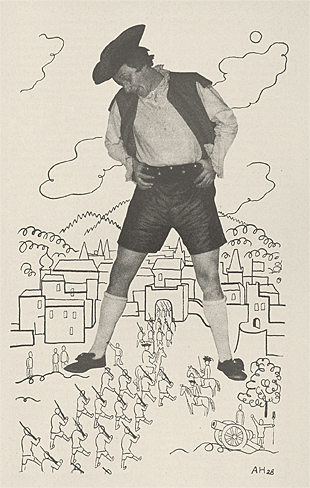
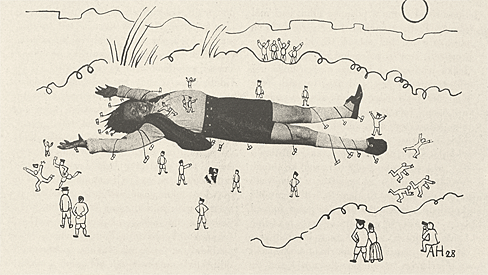
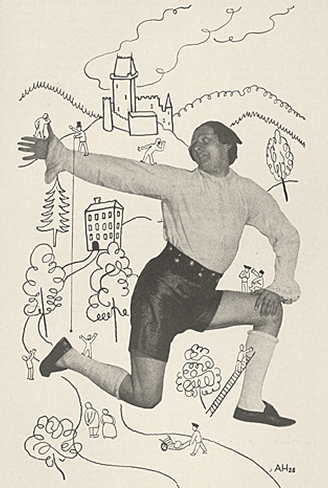
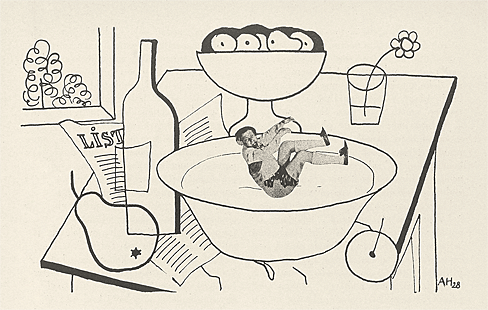
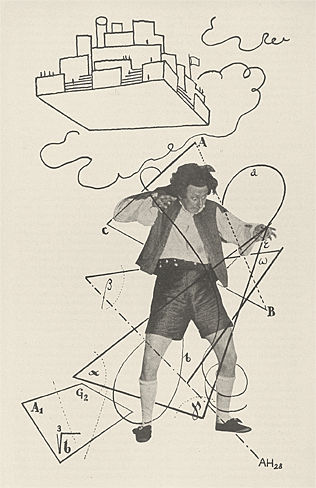
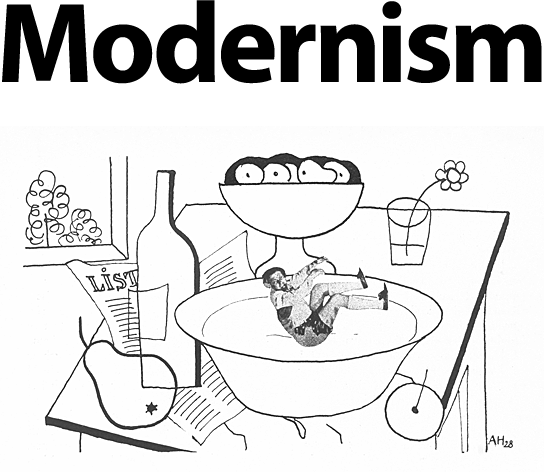
Gulliver’s Travels
Guliverovy cesty
By Jonathan Swift. Pictures by Adolf Hoffmeister
Ladisl. Kunciř; Praha 1929. 152pages. 308x208 mm
We thank Mr. Adam Hoffmeister and Mr. Martin Hoffmeister for giving permission to use Gulliver’s Travels.
Guliverovy cesty
By Jonathan Swift. Pictures by Adolf Hoffmeister
Ladisl. Kunciř; Praha 1929. 152pages. 308x208 mm
We thank Mr. Adam Hoffmeister and Mr. Martin Hoffmeister for giving permission to use Gulliver’s Travels.
Audio controller
(♪) The realization in the West that the world of art extended beyond Europe led to Modernism. Artists became immersed in the pursuit of new ideas and sensibilities. They discovered new realms of art in the sculptures of Africa and the expression of children. (♪)
| Year | Event and Picture Book |
|---|---|
| 1905 | Henri Matisse, André Derain, and the Fauvist movement |
| 1907 | Pablo Picasso, Les demoiselles d'Avignon |
| 1909 | Filippo Tommaso Marinetti’s Futurist Manifesto |
| 1912 | Paul Klee joins in Blue Rider (der Blaue Reiter) group |
| 1914 | The First World War begins |
| 1915 | Kazimir Malevich calls his style “suprematism” |
| 1917 | Russian Revolution of 1917 |
| 1918 | Tzara, the Dada Manifesto |
| 1919 | Weimar Republic established Bauhaus founded ![Front cover of “Sekai dowa hogyokushu” [A Treasury of World Children’s Stories]](../_media/image/commentary/parts/SEEN6-4_j.png) Sekai dowa hogyokushu [A Treasury of World Children’s Stories] |
Henri Matisse
1869-1954
The young Matisse was said to have had a great interest in the plastic arts of many different peoples. He collected black African sculpture and, admiring their emotion-arousing primitive forms, regarded them as more beautiful than the classical sculpture of ancient Greece.
Pablo Picasso
1881-1973
The young Picasso and George Braque, too, were enthusiastic about black African sculpture. In fact, his Les demoiselles d'Avignon, which became the seminal work of Cubism, was created under the influence of African sculpture, along with the work of Paul Cézanne and Iberian sculpture.
Paul Klee
1879-1940
Klee was inspired by the plastic arts created by children and mental patients. He thought that the essence of art was not the recreation of the visible, but making the invisible into the visible.
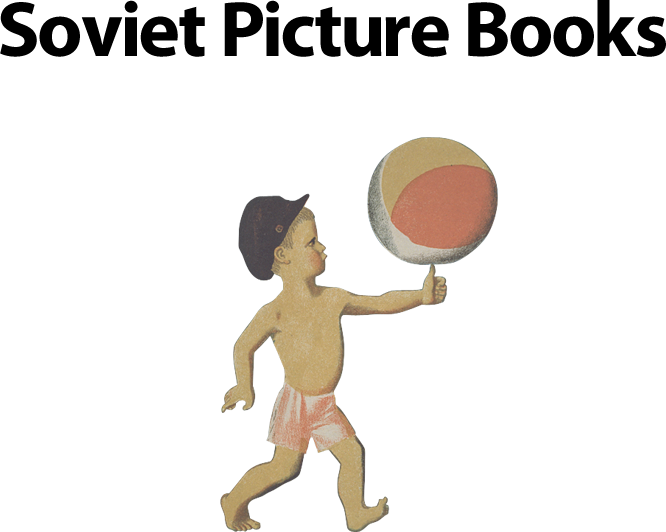
My Ball
By Samuil Marshak. Pictures by Aleksei Pakhomov
OGIZ; Leningrad. 1934, 10pages. 195x147 mm
We thank Mr.Aleksandr Marshak, Mr. Iakov Marshak, and Ms. Elen Pakhomova for giving permission to use My Ball.
By Samuil Marshak. Pictures by Aleksei Pakhomov
OGIZ; Leningrad. 1934, 10pages. 195x147 mm
We thank Mr.Aleksandr Marshak, Mr. Iakov Marshak, and Ms. Elen Pakhomova for giving permission to use My Ball.
Audio controller
(♪) In the midst of World War I, the October Revolution took place in Russia and the mammoth socialist state called the Union of Soviet Socialist Republics was born. For the first time, children’s picture books were used as a means of state education.
(♪) Meanwhile, poets confronted children with the question: “What are you going to be when you grow up?” And they called on them to be like lighthouses, shining their lights through the darkness. (♪)
(♪) The early 1930s was a rare time —short though it was— when artists devoted themselves to pure-minded and easy-to-understand explanations of social systems, art and its ideals, and the choices that each and every human being faces.

The Circus
By Samuil Marshak. Pictures by Vladimir Lebedev
Raduga; Leningrad. 1928(1925), 12pages. 290x230 mm
We thank Mr.Aleksandr Marshak, Mr. Iakov Marshak, and Ms. Ada Lazo for giving permission to use The Circus.
By Samuil Marshak. Pictures by Vladimir Lebedev
Raduga; Leningrad. 1928(1925), 12pages. 290x230 mm
We thank Mr.Aleksandr Marshak, Mr. Iakov Marshak, and Ms. Ada Lazo for giving permission to use The Circus.
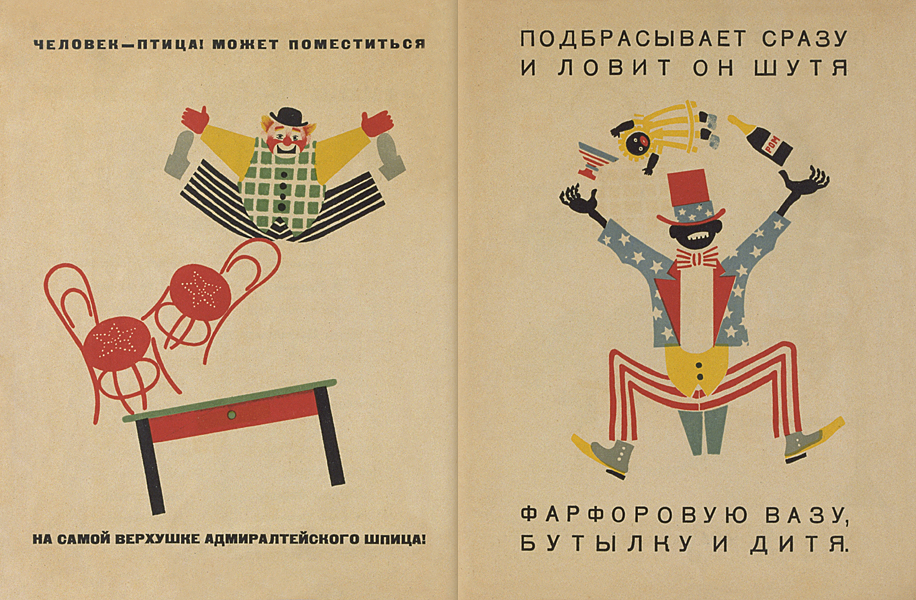
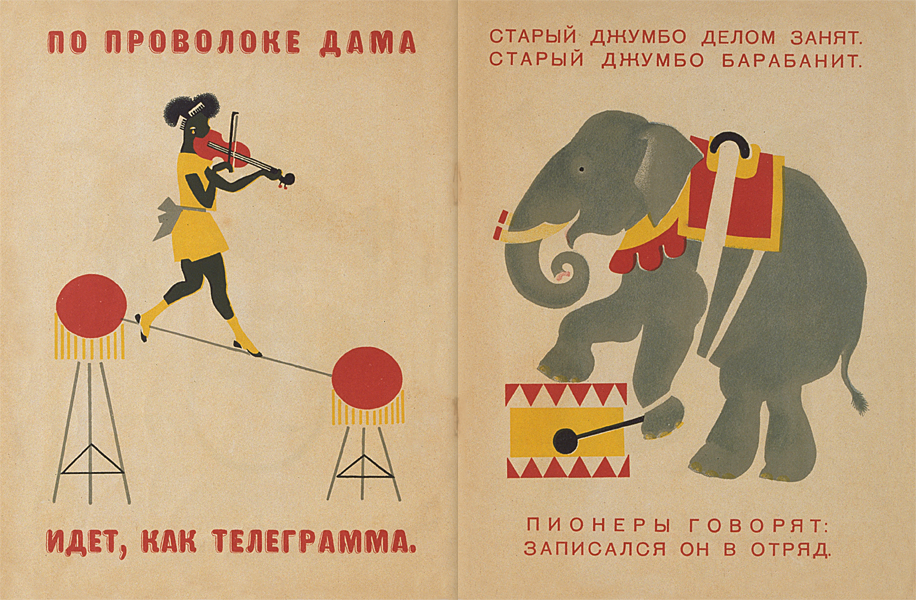

Ivan Ivanovich Samovar
By Daniil Kharms. Pictures by Vera Ermolaeva
GIZ; Moscow. 1929, 10pages. 220x190 mm
By Daniil Kharms. Pictures by Vera Ermolaeva
GIZ; Moscow. 1929, 10pages. 220x190 mm
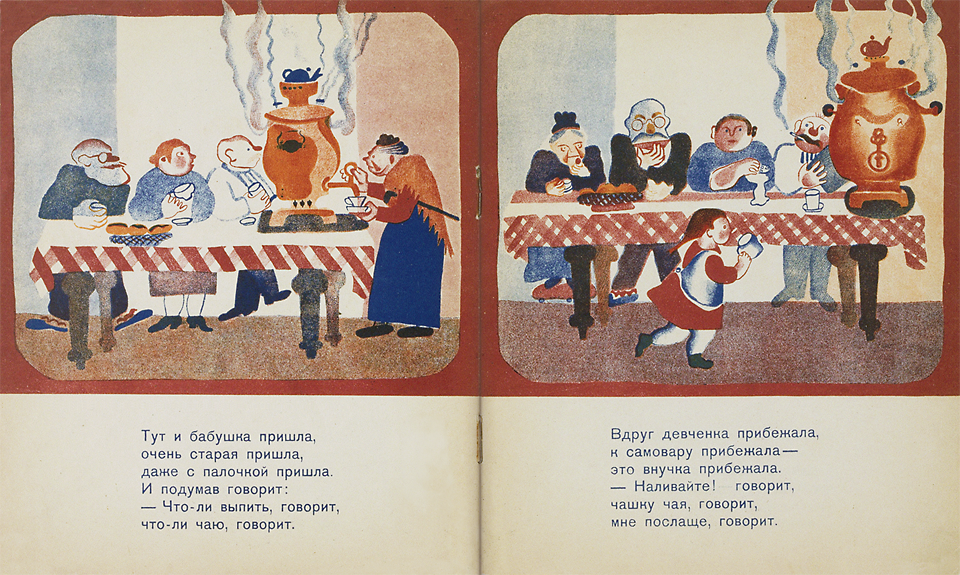 Ivan Ivanovich Samovar
Ivan Ivanovich Samovar
Yesterday and Today
By Samuil Marshak. Pictures by Vladimir Lebedev
OGIZ; Leningrad. 1931(1925), 12pages. 290x223 mm
We thank Mr.Aleksandr Marshak, Mr. Iakov Marshak, and Ms. Ada Lazo for giving permission to use Yesterday and Today.
By Samuil Marshak. Pictures by Vladimir Lebedev
OGIZ; Leningrad. 1931(1925), 12pages. 290x223 mm
We thank Mr.Aleksandr Marshak, Mr. Iakov Marshak, and Ms. Ada Lazo for giving permission to use Yesterday and Today.
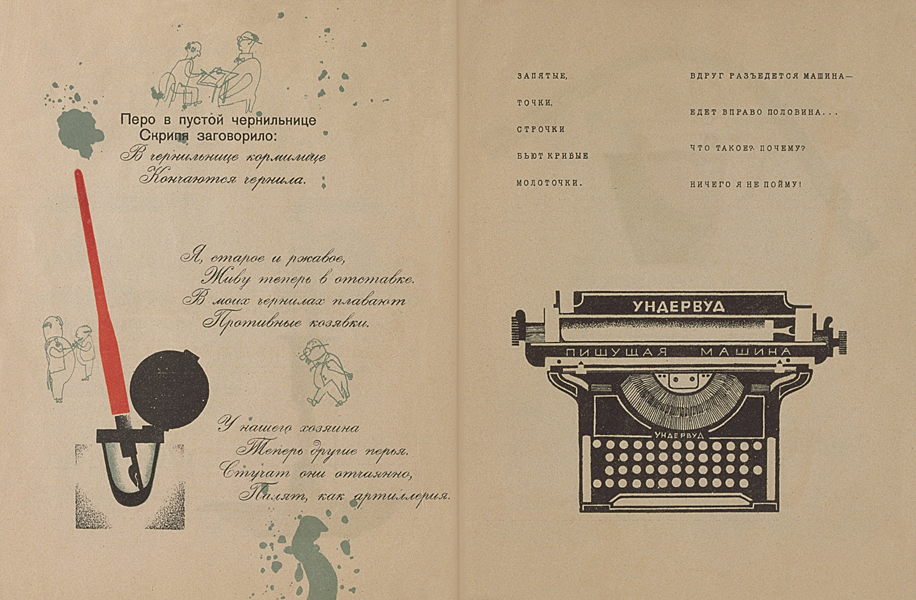

My Ball
By Samuil Marshak. Pictures by Aleksei Pakhomov
OGIZ; Leningrad. 1934, 10pages. 195x147 mm
We thank Mr.Aleksandr Marshak, Mr. Iakov Marshak, and Ms. Elen Pakhomova for giving permission to use My Ball.
By Samuil Marshak. Pictures by Aleksei Pakhomov
OGIZ; Leningrad. 1934, 10pages. 195x147 mm
We thank Mr.Aleksandr Marshak, Mr. Iakov Marshak, and Ms. Elen Pakhomova for giving permission to use My Ball.
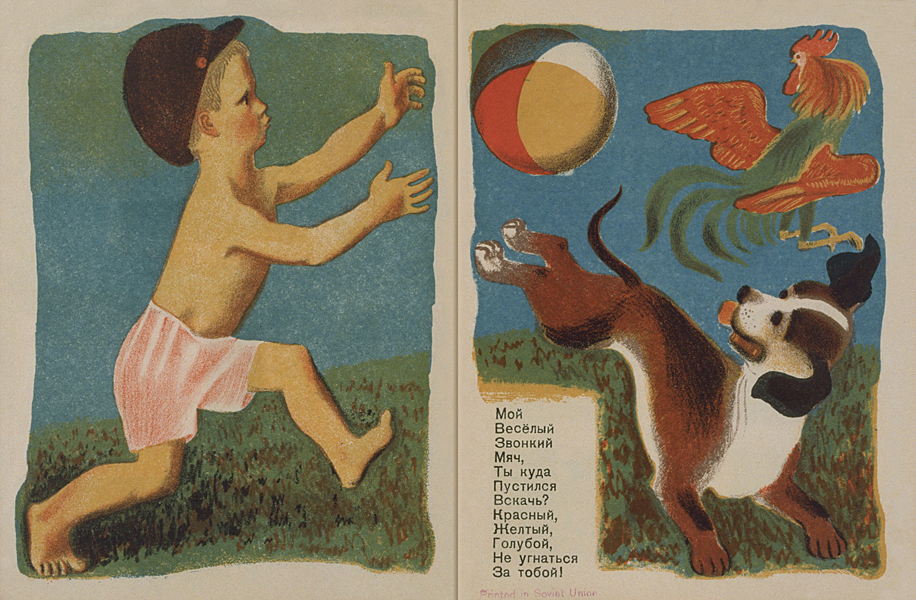

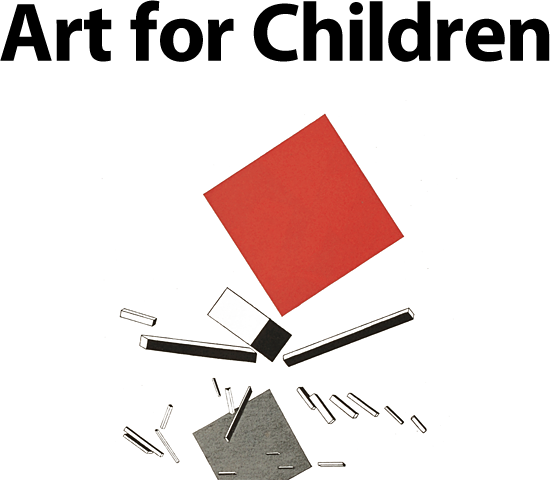
About Two Squares
To children, to all CHILDREN
A suprematist tale about two squares in 6 constructions
By El Lissitzky
Sythian; Berlin. 1922, 20pages. 280x223 mm
To children, to all CHILDREN
A suprematist tale about two squares in 6 constructions
By El Lissitzky
Sythian; Berlin. 1922, 20pages. 280x223 mm
Audio controller
(♪) During this period avant-garde art boldly addressed its work directly to children themselves.
(♪) Russian designer and architect El Lissitzky published About Two Squares, in Berlin in 1922, which appears to have been designed to transmit to children the principle of the Soviet revolution from the perspective of outer space. (♪)
| Year | Event and Picture Book |
|---|---|
| 1915 | Kazimir Malevich calls his style “suprematism” |
| 1917 | Russian Revolution of 1917 |
| 1922 | Union of Soviet Socialist Republics established About Two Squares |
| 1925 |  The Circus  Yesterday and Today |
| 1927 | My Book about the Sea and the Lighthouse |
| 1929 |  Ivan Ivanovich Samovar Joseph Stalin regime established. |
| 1934 |  My Ball |
| 1939 | World War II begins |

About Two Squares
To children, to all CHILDREN
A suprematist tale about two squares in 6 constructions
By El Lissitzky
Sythian; Berlin. 1922, 20pages. 280x223 mm
To children, to all CHILDREN
A suprematist tale about two squares in 6 constructions
By El Lissitzky
Sythian; Berlin. 1922, 20pages. 280x223 mm





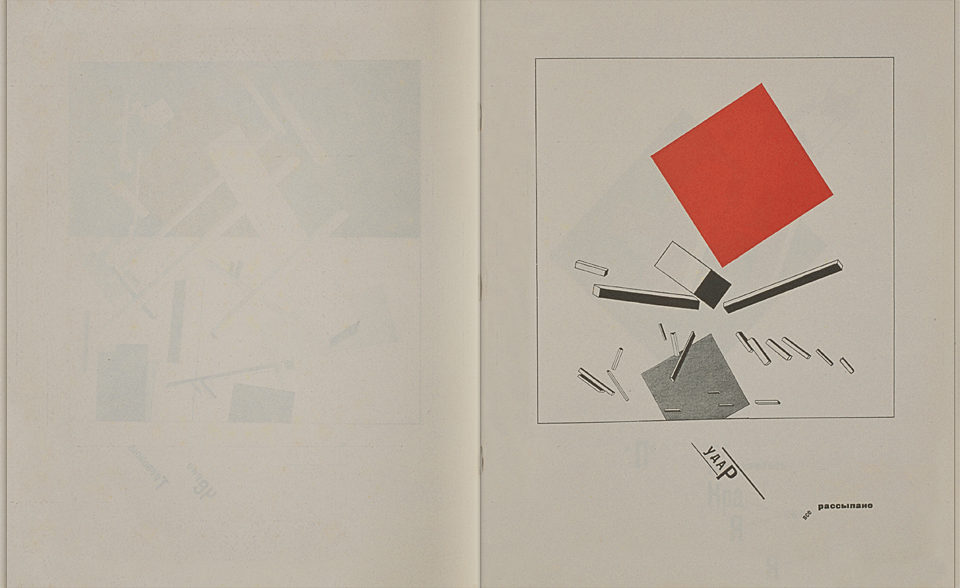
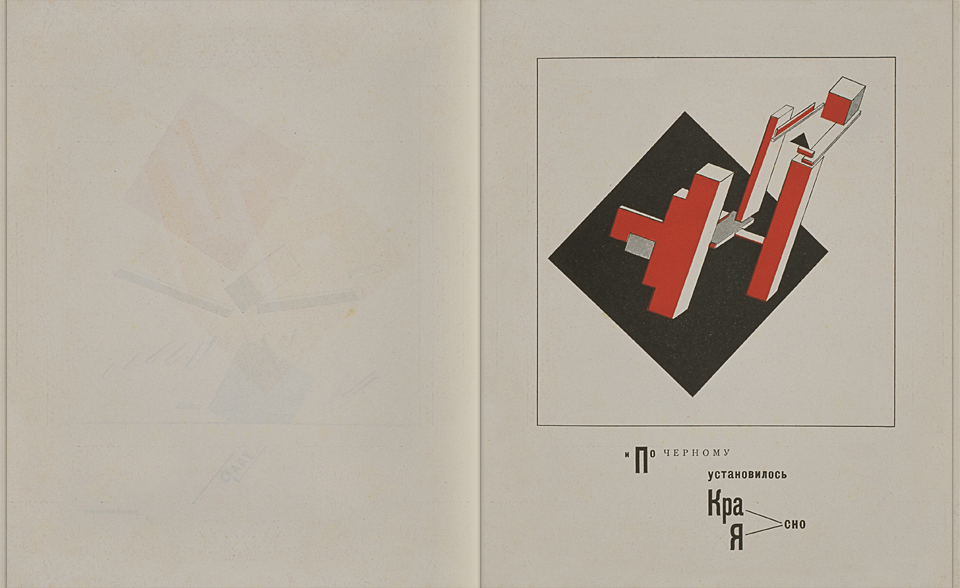
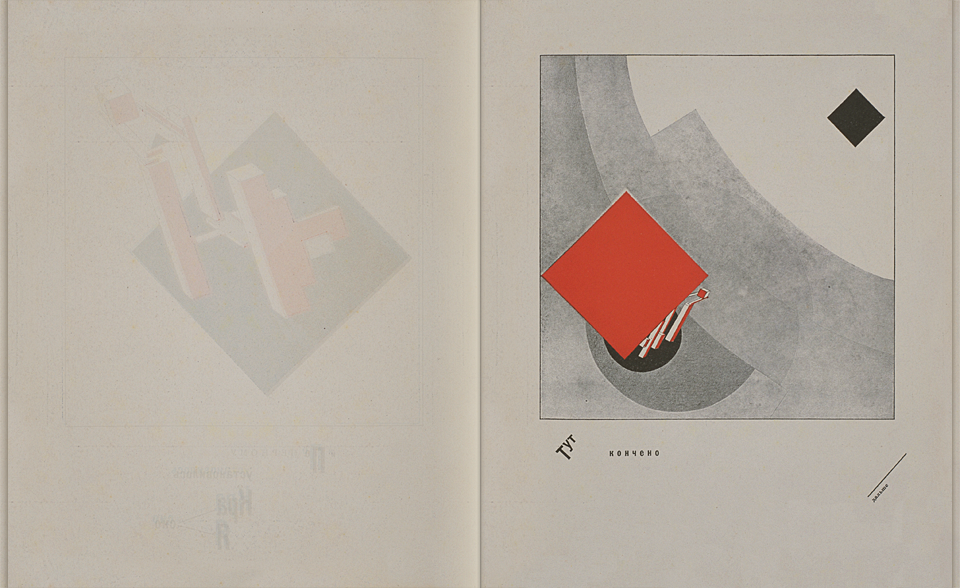
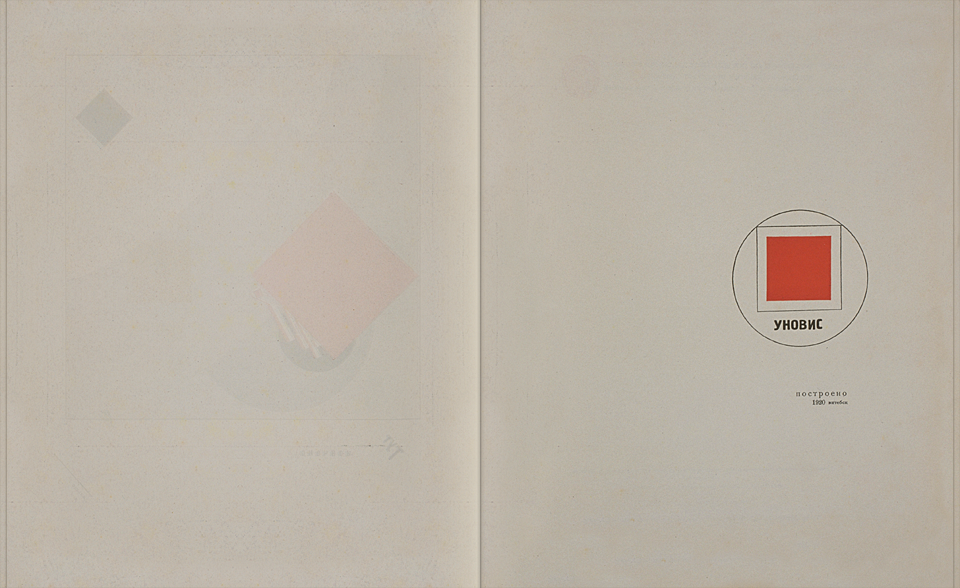
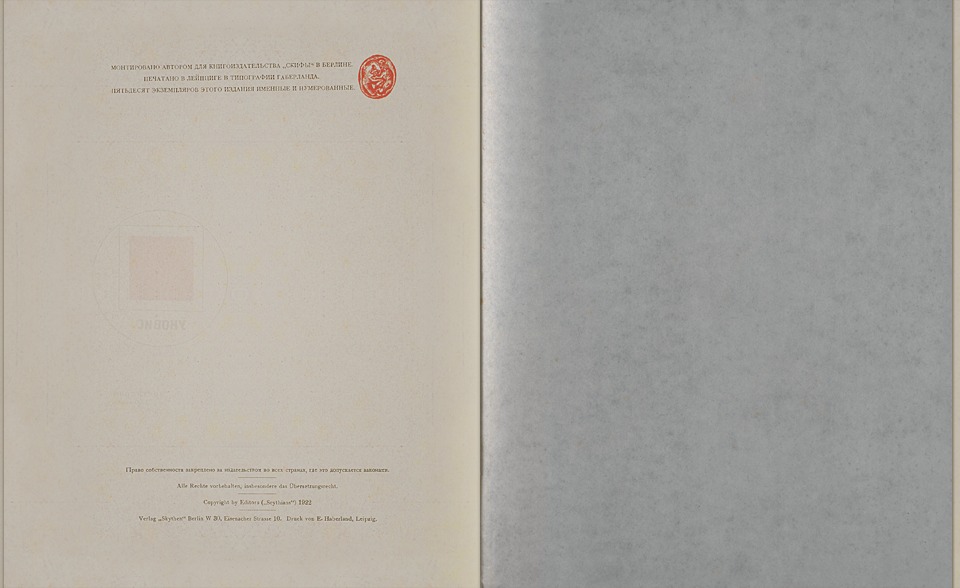
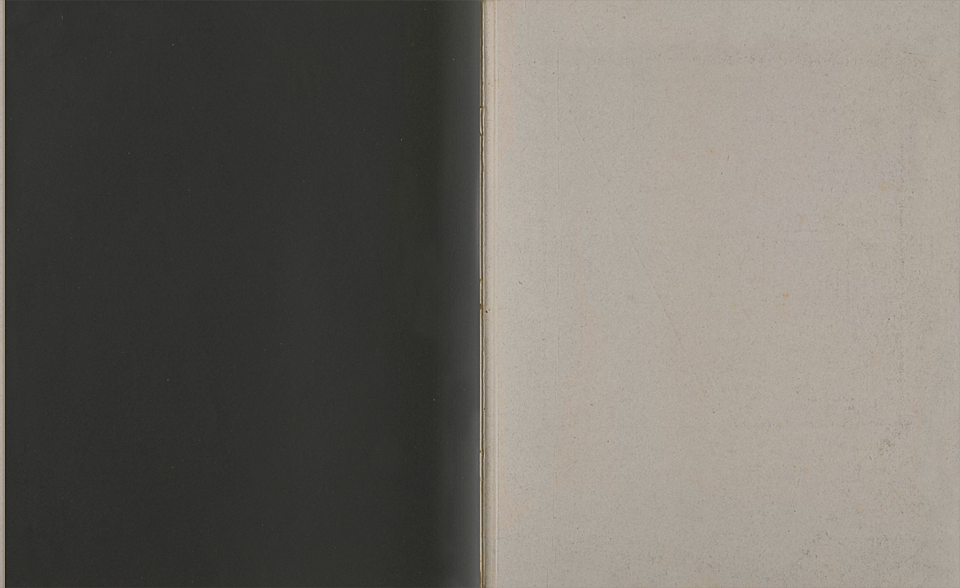
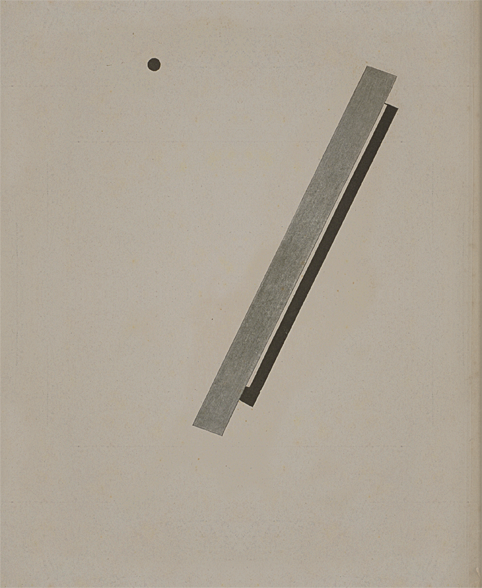
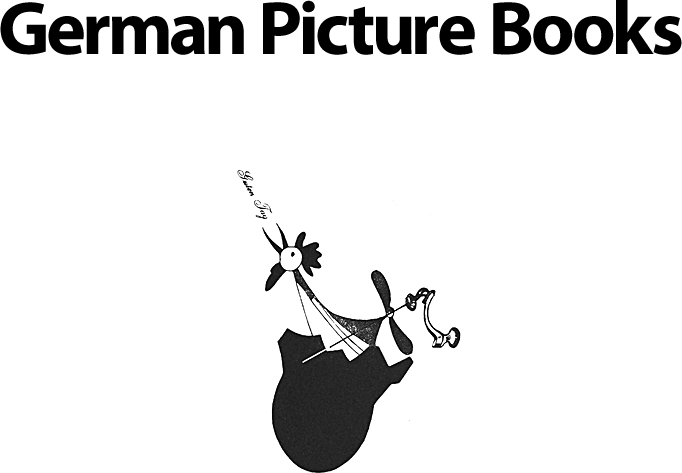
Stories of Paradise
By Kurt Schwitters and Kate Steinitz
Apossverlag; Hannover. 1924, 32pages. 273x210 mm
We thank The Steinitz Family Art Collection for giving permission to use Stories of Paradise.
By Kurt Schwitters and Kate Steinitz
Apossverlag; Hannover. 1924, 32pages. 273x210 mm
We thank The Steinitz Family Art Collection for giving permission to use Stories of Paradise.
Audio controller
(♪) In Germany, after its defeat in World War I, picture books for children displaying experimental approaches without precedent were being published. (♪)
| Year | Event and Picture Book |
|---|---|
| 1918 | Tzara, the Dada Manifesto World War II ends. |
| 1919 | Weimar Republic established Bauhaus founded |
| 1924 | André Breton, the Surrealist Manifesto Stories of Paradise |
| 1929 |  The Magic Boat Great Depression begins in New York |
| 1933 | Adolf Hitler takes power Bauhaus closed by Nazis |

Stories of Paradise
By Kurt Schwitters and Kate Steinitz
Apossverlag; Hannover. 1924, 32pages. 273x210 mm
We thank The Steinitz Family Art Collection for giving permission to use Stories of Paradise.
By Kurt Schwitters and Kate Steinitz
Apossverlag; Hannover. 1924, 32pages. 273x210 mm
We thank The Steinitz Family Art Collection for giving permission to use Stories of Paradise.




The Magic Boat
A Book to Turn, Move and Alter
By Tom Seidmann-Freud
Herbert Stuffer; Berlin 1929, 12pages. 242x207 mm
A Book to Turn, Move and Alter
By Tom Seidmann-Freud
Herbert Stuffer; Berlin 1929, 12pages. 242x207 mm
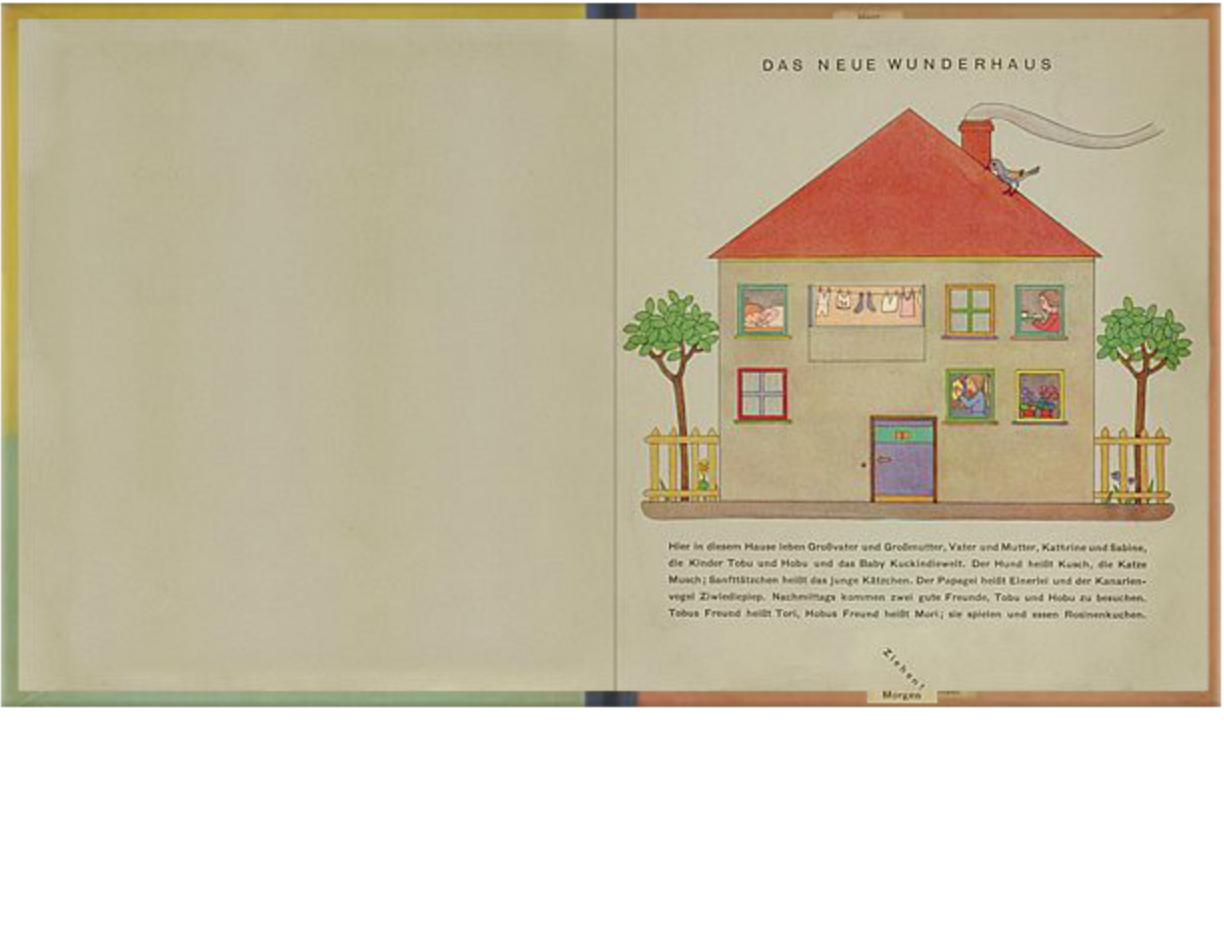
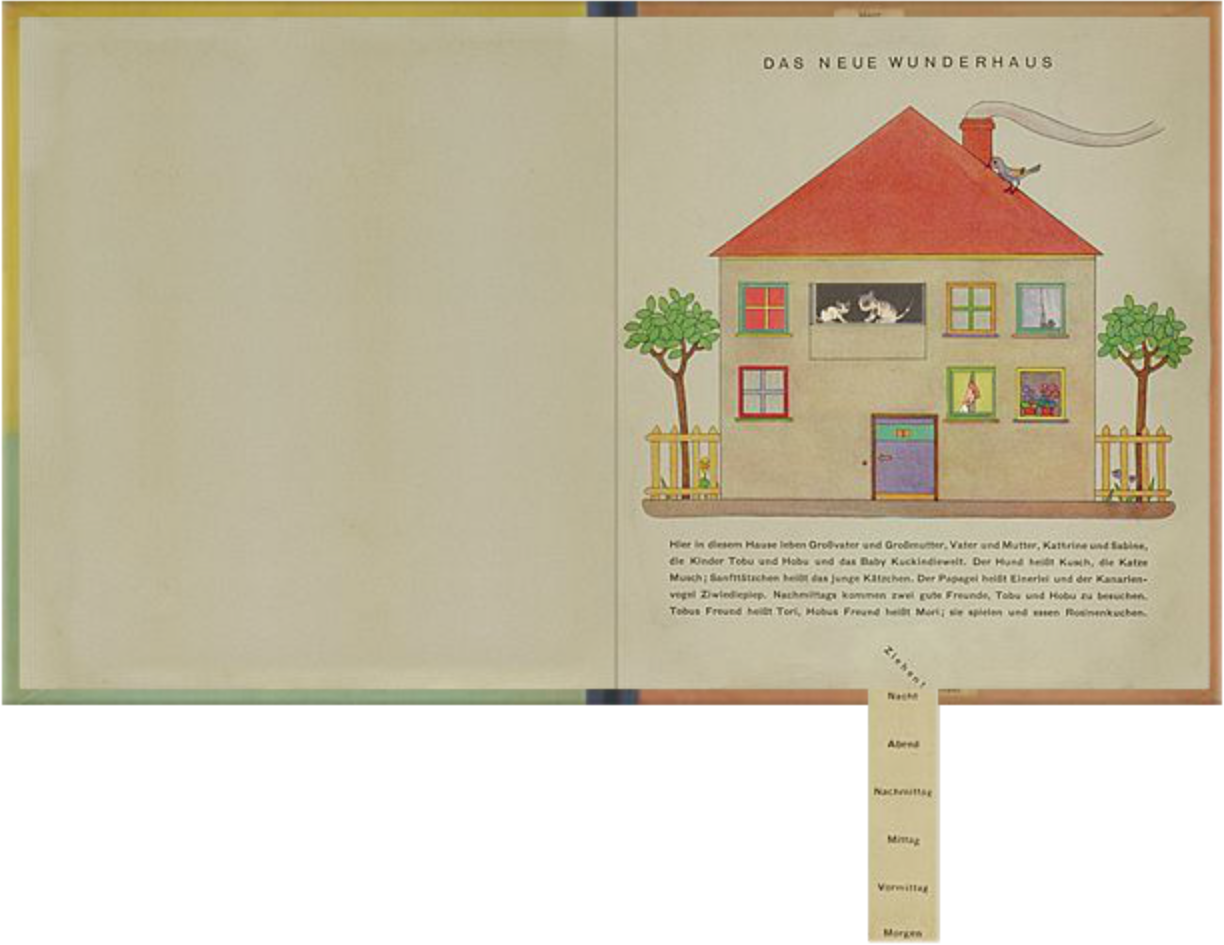
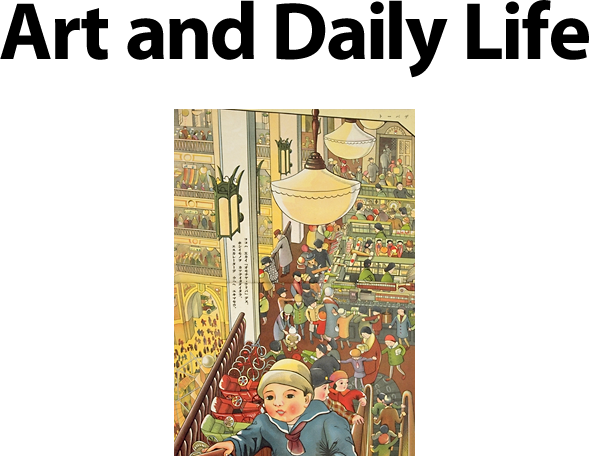
Department store
Illustration: YASUI Koyata
Kodomo no kuni (February 1932)
Illustration: YASUI Koyata
Kodomo no kuni (February 1932)
Audio controller
(♪) The role of the Arts and Crafts Movement, which had inspired Jugendstil, or Art Deco art, in seeking beauty in the furnishings, tableware, and other items of daily life, was passed on by Germany’s Bauhaus Institute.
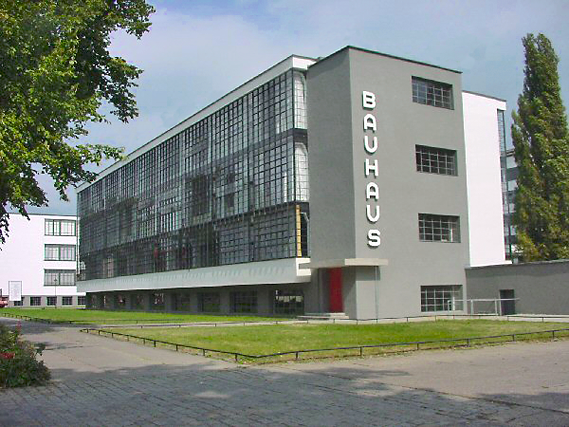
The Bauhaus College (in Dessau, 1925-32)
Art college established in Germany in 1919 to integrate the study of fine arts, crafts, photography, design, and architecture. The building constructed in 1925, when the school was moved from Weimar to Dessau, was designed by founder and first president of the school, architect Walter Gropius, and was considered a representative work of Modern architecture. The influence of the college on the plastic arts in general was far-reaching. Paul Klee and Wassily Kandinsky taught there and published their writings among the works of the college.
Art college established in Germany in 1919 to integrate the study of fine arts, crafts, photography, design, and architecture. The building constructed in 1925, when the school was moved from Weimar to Dessau, was designed by founder and first president of the school, architect Walter Gropius, and was considered a representative work of Modern architecture. The influence of the college on the plastic arts in general was far-reaching. Paul Klee and Wassily Kandinsky taught there and published their writings among the works of the college.
(♪) The ideas on urban planning of Le Corbusier, leader of the Modernist movement in architecture, produced the housing complexes of Bruno Taut.
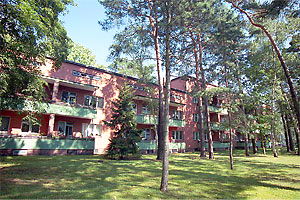
Seidlung Onkel Toms Hütte
A housing complex designed in 1926-32 by architect Bruno Taut (1880-1938) and built in the suburbs of Berlin. Taut is said to have designed a massive number of housing complexes during his career, including more than 12,000 units. In 1933 he fled Germany and came to Japan where he became involved with the production and sales of modern handicrafts featuring Japanese materials and was an active advocate of appreciation of Japanese arts through his writings on Katsura Detached Palace.
Photographs : SAITO Tadashi. (C) SAITO Tadashi
A housing complex designed in 1926-32 by architect Bruno Taut (1880-1938) and built in the suburbs of Berlin. Taut is said to have designed a massive number of housing complexes during his career, including more than 12,000 units. In 1933 he fled Germany and came to Japan where he became involved with the production and sales of modern handicrafts featuring Japanese materials and was an active advocate of appreciation of Japanese arts through his writings on Katsura Detached Palace.
Photographs : SAITO Tadashi. (C) SAITO Tadashi
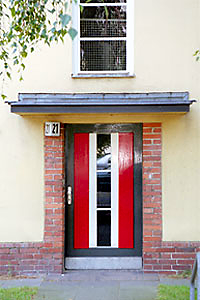
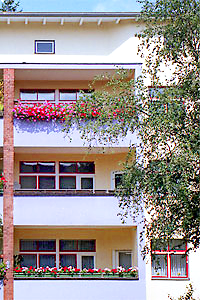
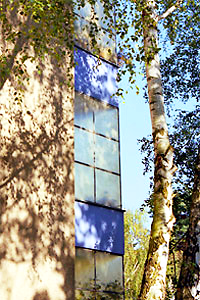
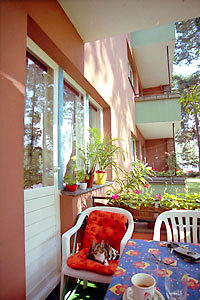
(♪) In Japan, during the Taisho era (1912-1926), the idea of “democracy” was on everyone’s lips. The Shirokiya, Matsuya, and Takashimaya department stores were opened in 1919. Numerous masterful works of children’s literature were published, including Sekai dowa hogyokushu [A Treasury of World Children’s Stories], by Fuzanbo. (♪)
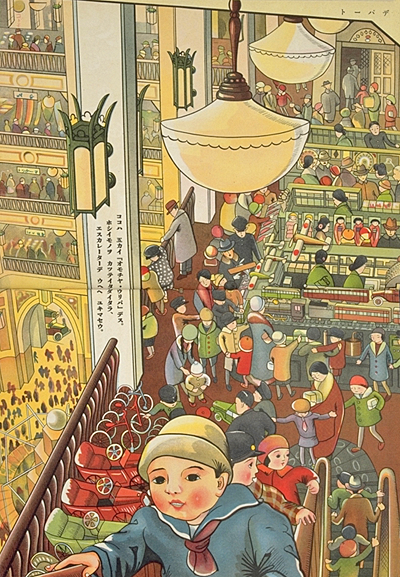
Department store
Illustration: YASUI Koyata
Kodomo no kuni (February 1932)
Illustration: YASUI Koyata
Kodomo no kuni (February 1932)
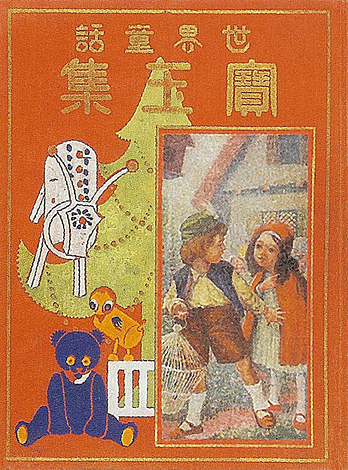
Sekai dowa hogyokushu [Treasures of world Children's Literature]
KUSUYAMA Masao,ed. OKAMOTO Kiichi, design and illustrations
Fuzanbo, 1919. 602 pages. 212 x 163 mm
One volume in the 24-volume Mohan katei bunko [Model Household Library], a beautifully produced series published between 1915 and 1933.
KUSUYAMA Masao,ed. OKAMOTO Kiichi, design and illustrations
Fuzanbo, 1919. 602 pages. 212 x 163 mm
One volume in the 24-volume Mohan katei bunko [Model Household Library], a beautifully produced series published between 1915 and 1933.
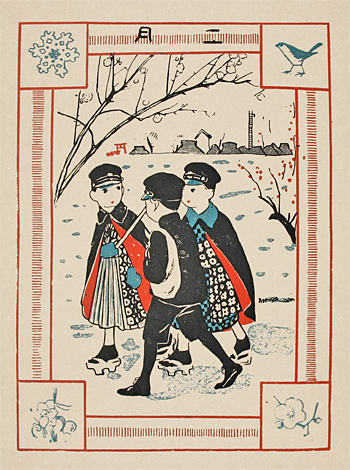
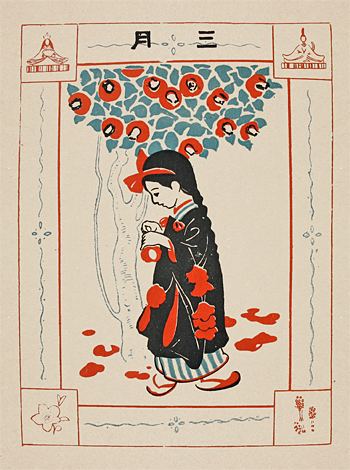
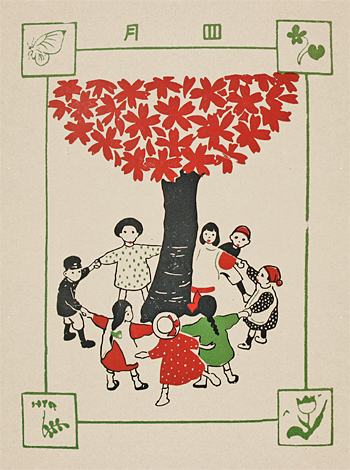
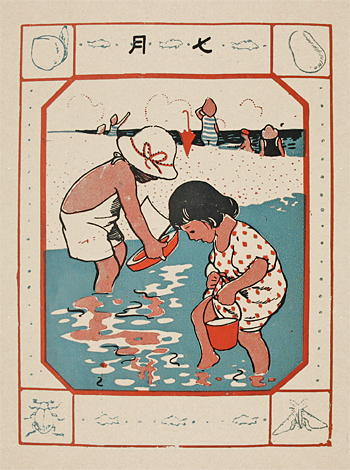
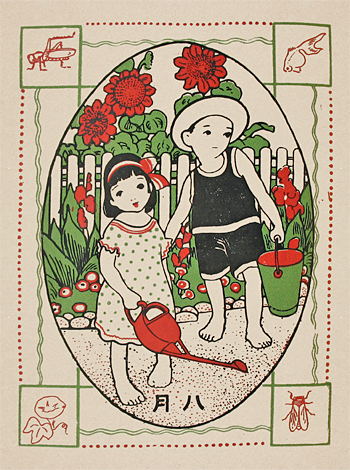
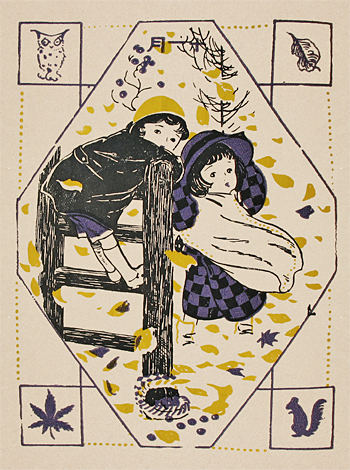
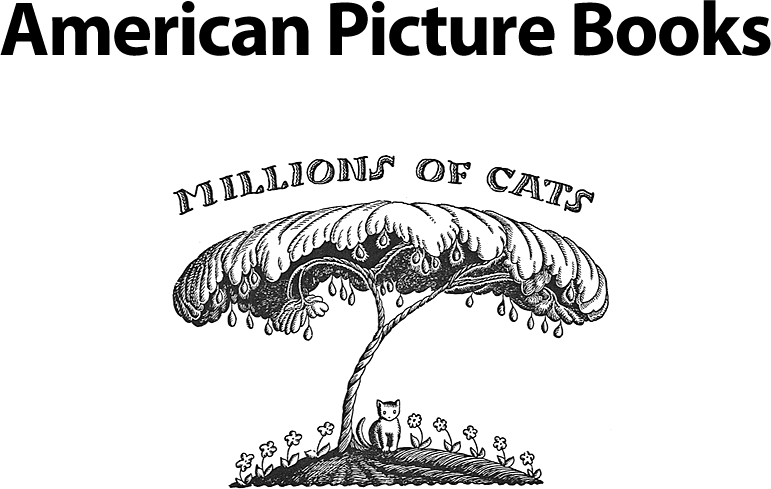
Millions of Cats
Pictures by Wanda Gág
Coward McCann, Inc.; New York. 1928 Thirty-third Impression, 32pages 250x170 mm
Pictures by Wanda Gág
Coward McCann, Inc.; New York. 1928 Thirty-third Impression, 32pages 250x170 mm
Audio controller
(♪) In the United States, too, major American publishers began to establish departments for children’s books. They ushered in a golden age of picture books for children, their pages enriched by the cultures of immigrants coming from all over the world. Many of the works first published at that time continue to be read even today. (♪)
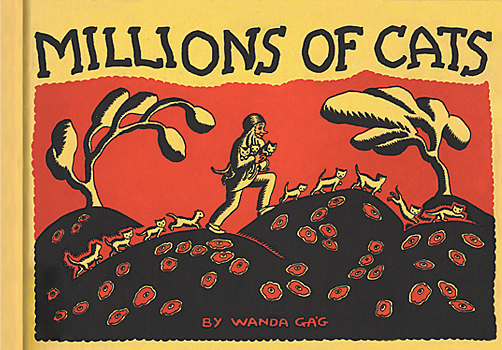
Millions of Cats
Pictures by Wanda Gág
Coward McCann, Inc.; New York. 1928 Thirty-third Impression, 32pages 250x170 mm
Pictures by Wanda Gág
Coward McCann, Inc.; New York. 1928 Thirty-third Impression, 32pages 250x170 mm
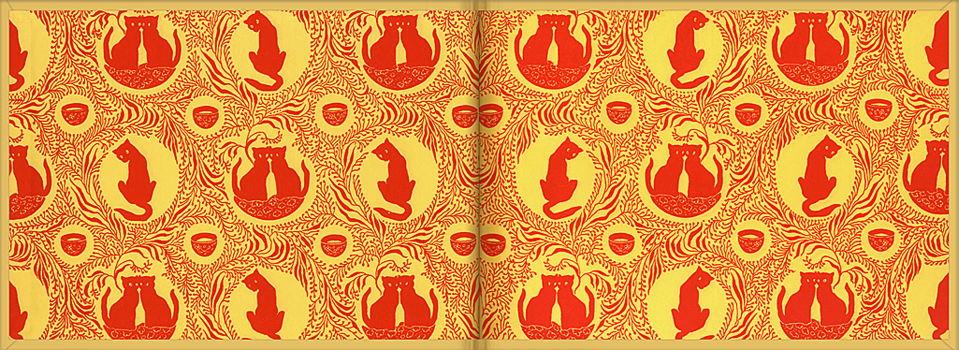
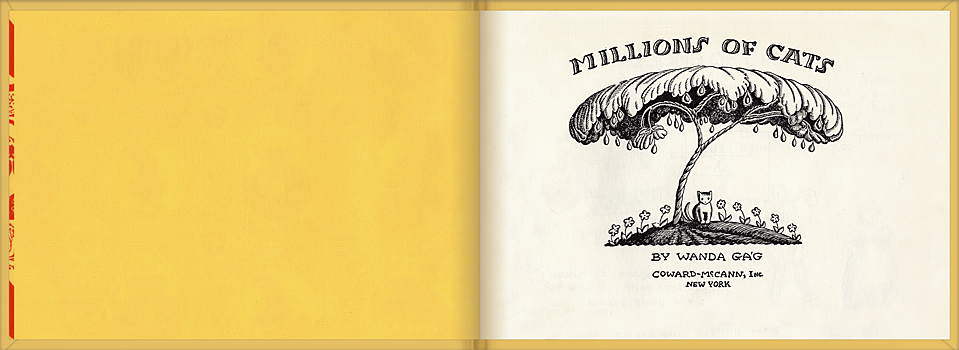
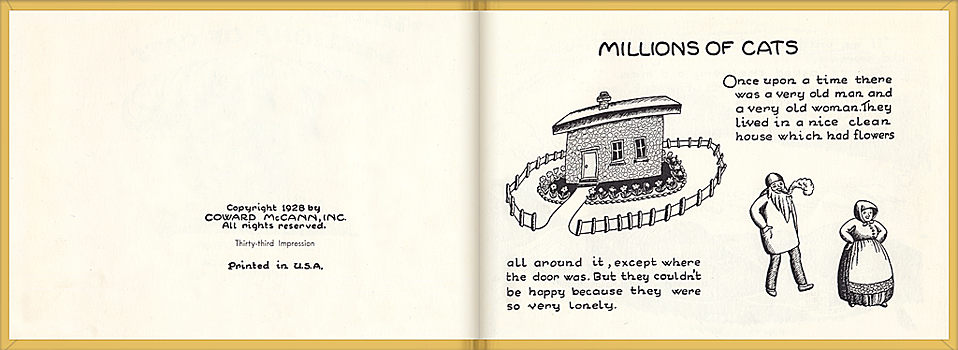
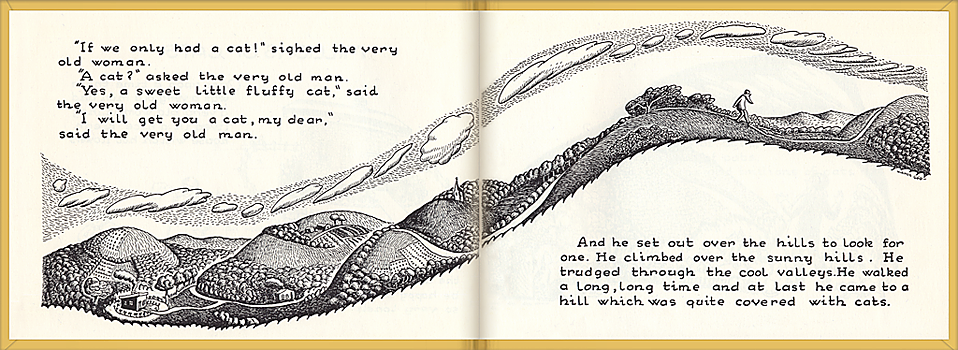
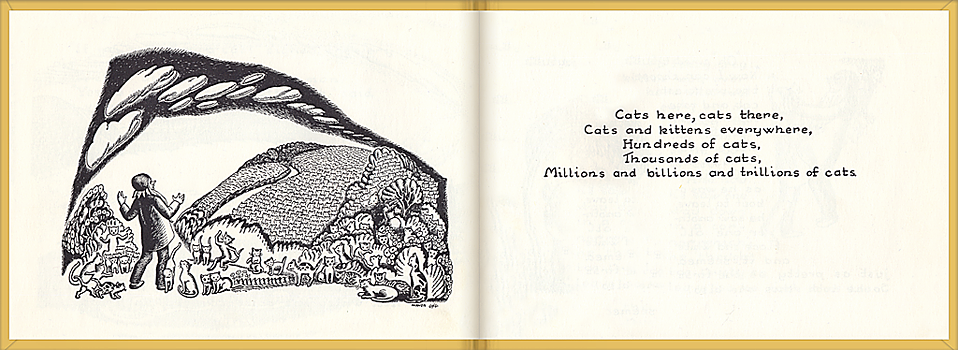
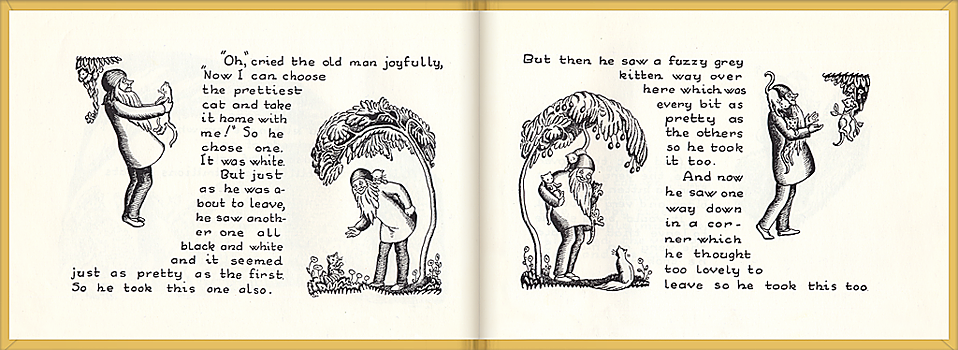
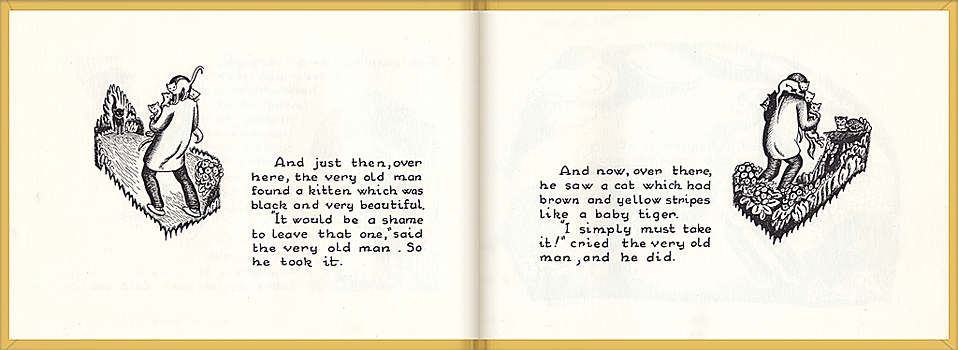
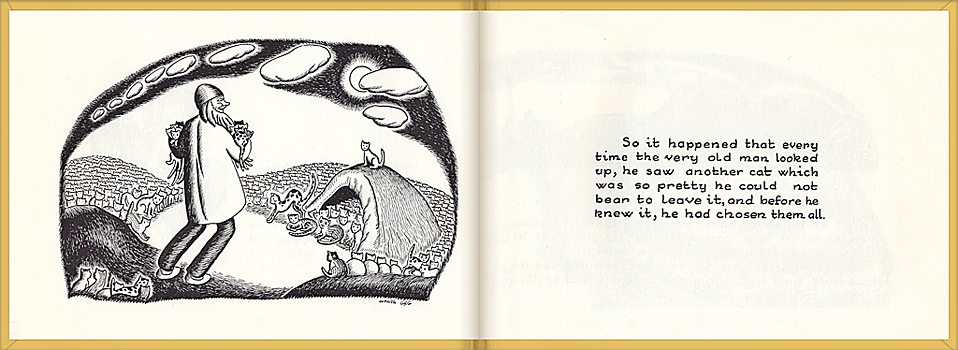
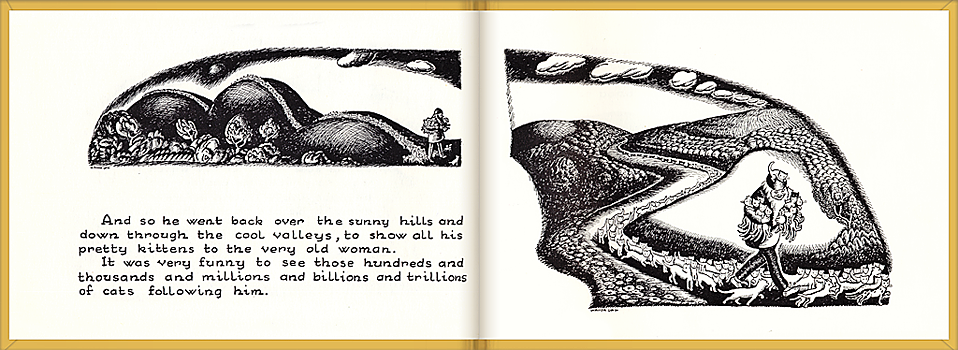
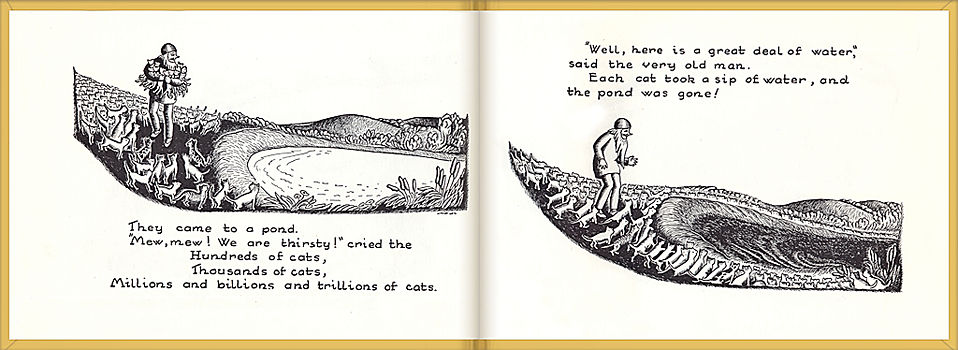
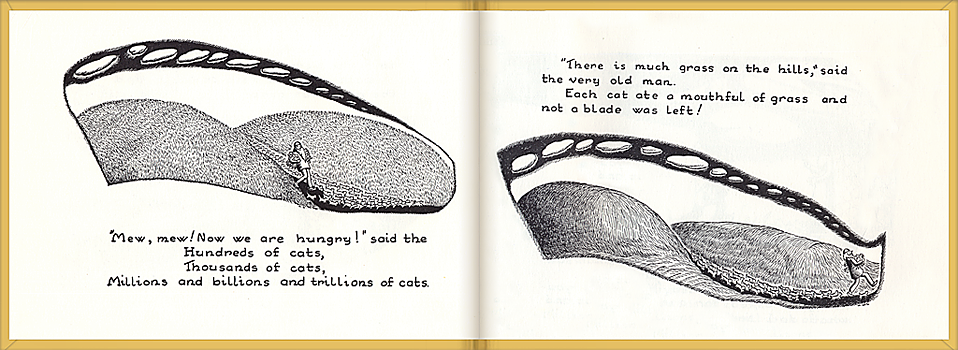
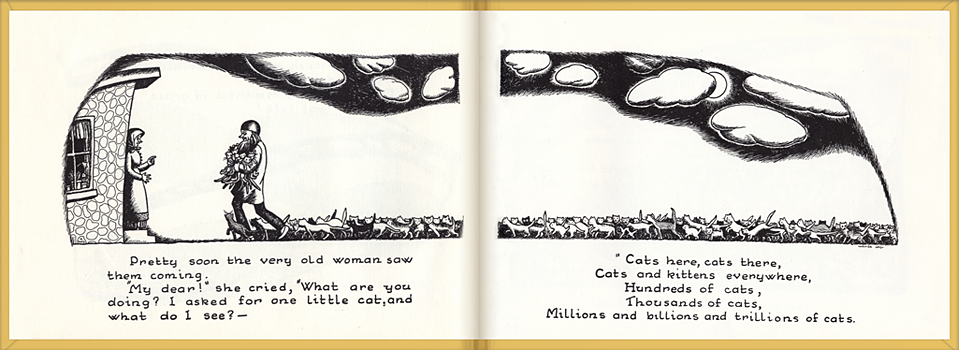
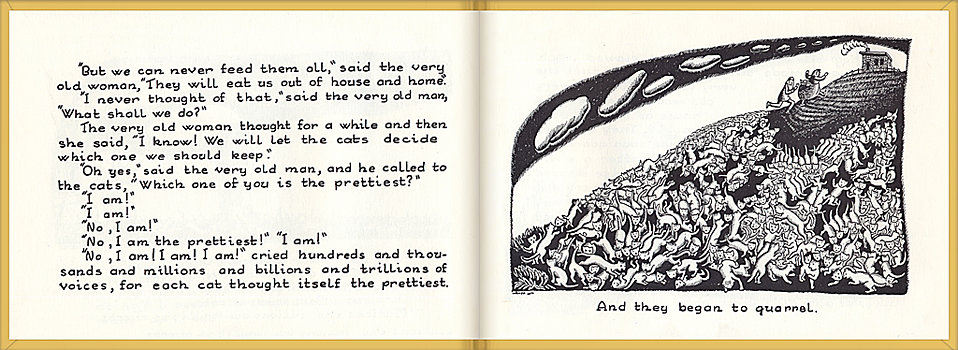
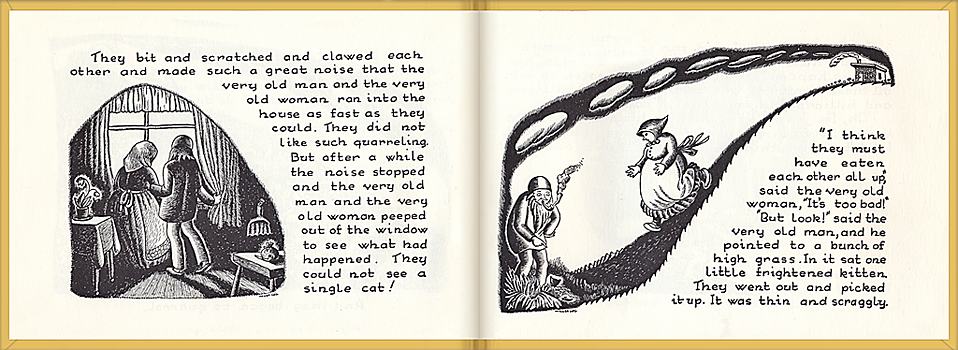
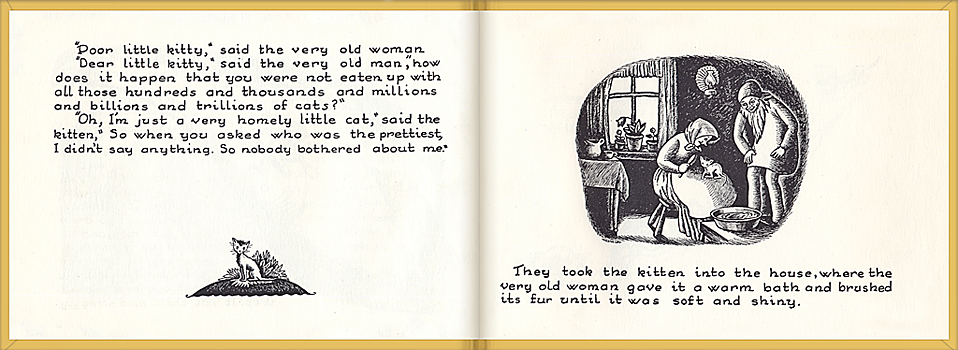
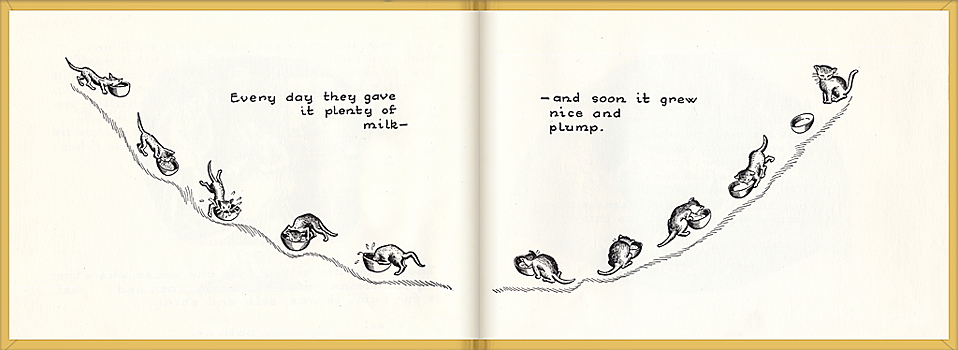
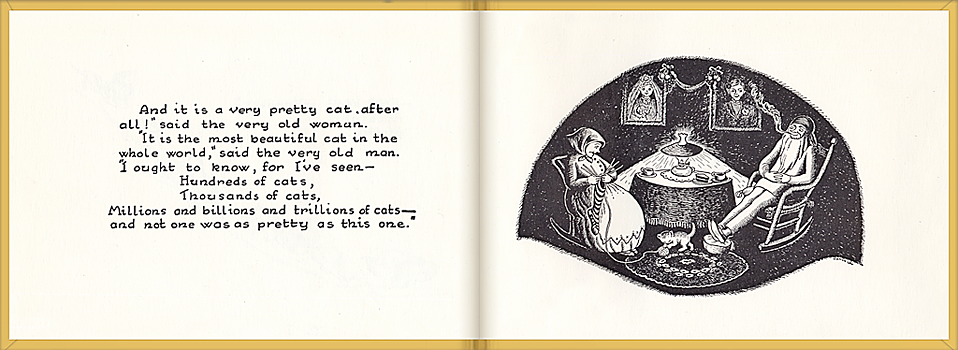
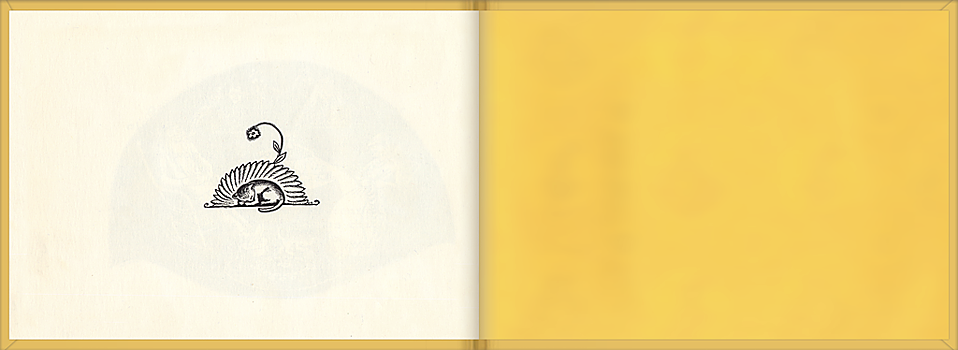
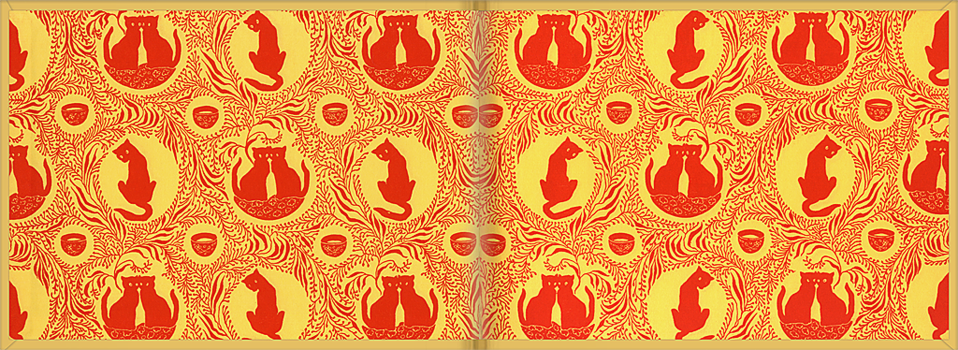

(♪) Here in “Art and Daily Life: Modernism in the Picture Book,” we introduce a leading work of a photographer of the time who aimed his camera at the technicians and laborers building skyscrapers in the city. The landscape of New York’s Manhattan was itself the expression of Modernism.
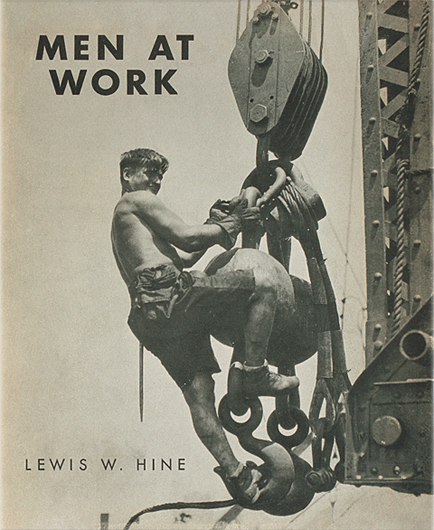
Men At Work
Photographic studies of modern men and machines
By Lewis W. Hine
The Macmillan Company; New York. 1932, 48pages. 260x208 mm
Photographic studies of modern men and machines
By Lewis W. Hine
The Macmillan Company; New York. 1932, 48pages. 260x208 mm
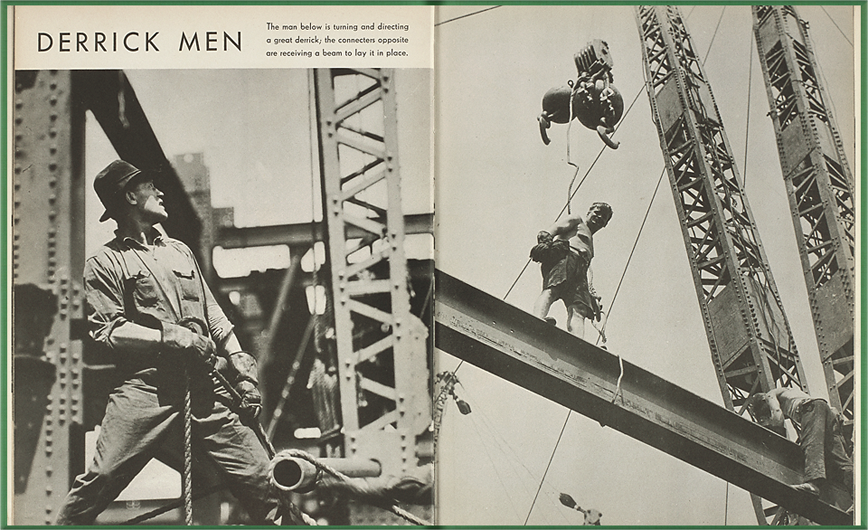
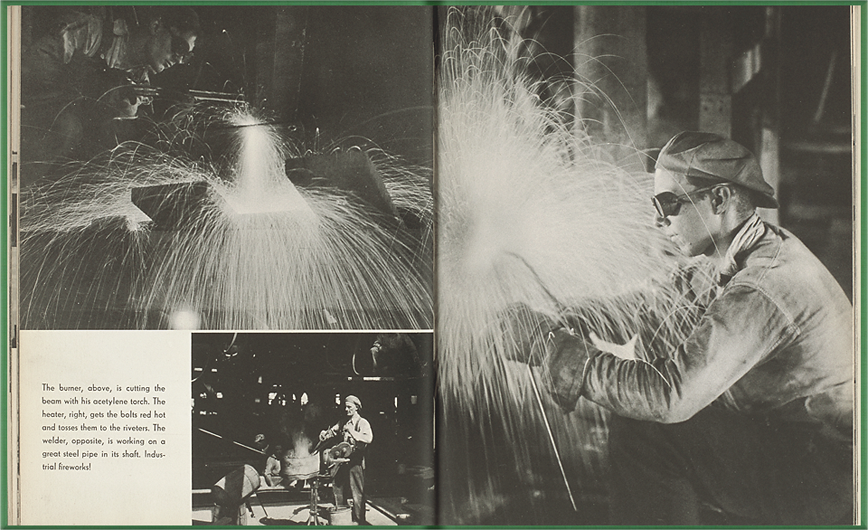
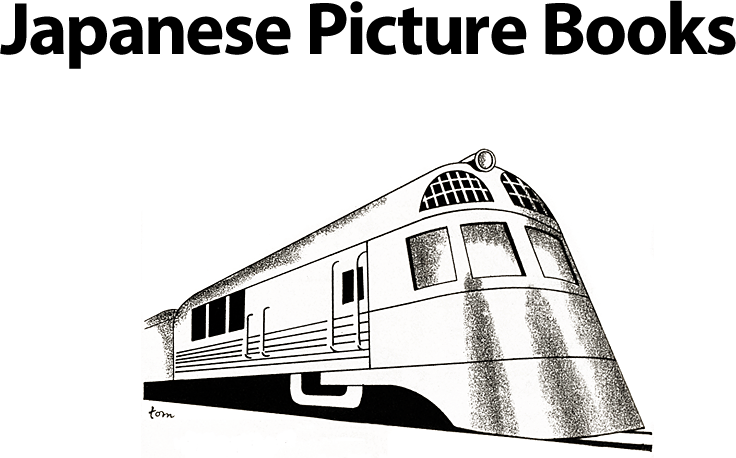
Train
Elementary Science Picture Book Series, vol.4
compiled by TSUJI Jiro. Pictures by MURAYAMA Tomoyoshi
Tokyosha; Tokyo. 1937, 32pages 210 x195mm
Elementary Science Picture Book Series, vol.4
compiled by TSUJI Jiro. Pictures by MURAYAMA Tomoyoshi
Tokyosha; Tokyo. 1937, 32pages 210 x195mm
Audio controller
(♪) Modernism in Japan had often been expressed through Western lifestyles and fashions, as exemplified in the works of Takehisa Yumeji, but in the 1930s, we find picture books that deal with products, resources, and transportation technology that are part of daily life. (♪)
Takehisa Yumeji (1884-1934)
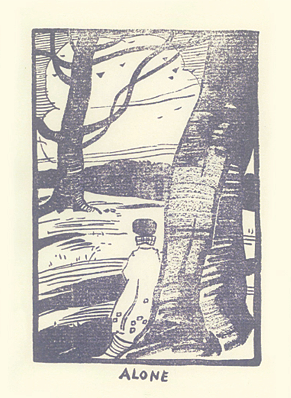 Alone
AloneYumeji gashu: Natsu no maki [The Works of Takehisa Yumeji: Summer] (April 1910)
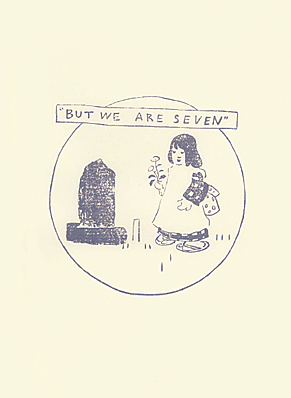 But We Are Seven
But We Are SevenYumeji gashu: Natsu no maki [The Works of Takehisa Yumeji: Summer] (April 1910)
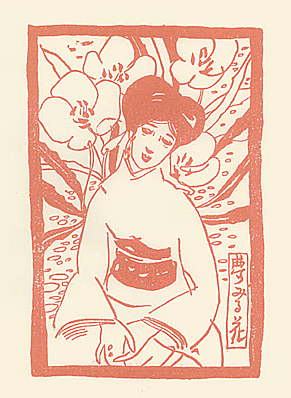 Yume miru hana [Flowers in the Dream]
Yume miru hana [Flowers in the Dream]Yumeji gashu: Hana no maki [The Works of Takehisa Yumeji: Flowers] (May 1910)
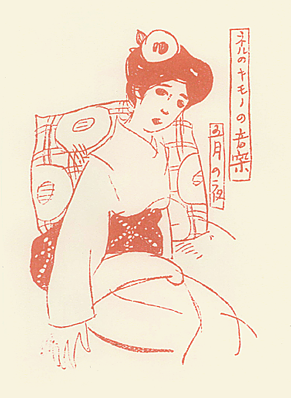 Neru no kimono no ongaku [The Music of Nell’s Kimono]
Neru no kimono no ongaku [The Music of Nell’s Kimono]Yumeji gashu: Hana no maki [The Works of Takehisa Yumeji: Flowers] (May 1910)
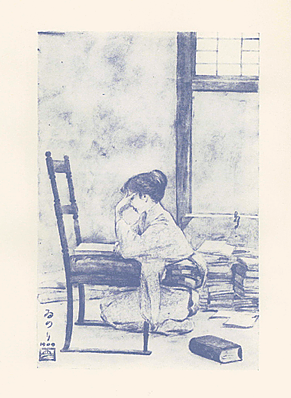 Inori [Prayer]
Inori [Prayer]Yumeji gashu: Tabi no maki [The Works of Takehisa Yumeji: Travel] (July 1910)
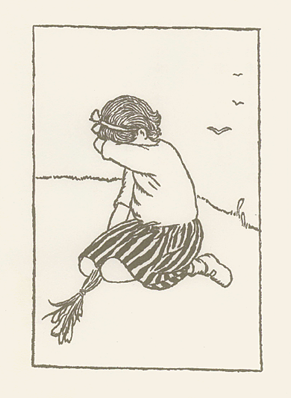 Uta utai [Singing Songs] illustration
Uta utai [Singing Songs] illustrationUta-dokei [Singing Clock] (July 1919)
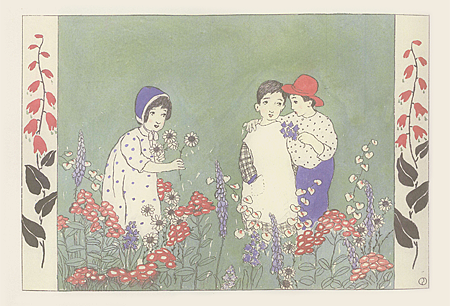 Hana no sono [Flower Garden]
Hana no sono [Flower Garden]Kodomo no tomo [The Children’s Friend] (May 1915)
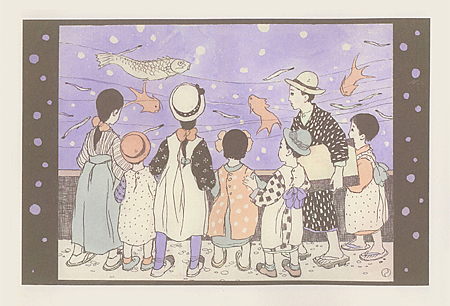 Suizokukan [Aquarium]
Suizokukan [Aquarium]Kodomo no tomo [The Children’s Friend] (June 1915)
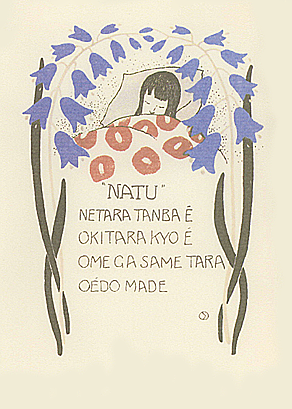 NATU
NATUNemu no ki [The Silk Tree] (March 1916)
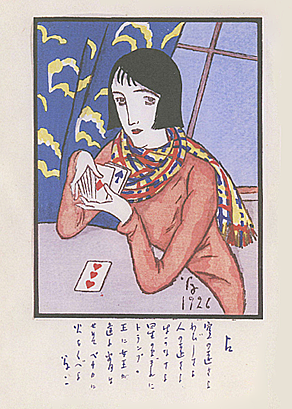 Uranai [Fortunetelling]
Uranai [Fortunetelling]Fujin gurafu [Women’s Graph] (January 1927)
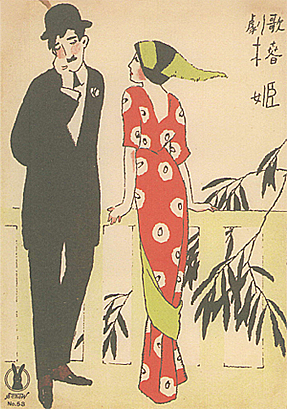 Senoo gakufu dai 53-ban Kageki Tsubaki-hime [Senoo Musical Score No. 53, Opera Camille] (August 1917)
Senoo gakufu dai 53-ban Kageki Tsubaki-hime [Senoo Musical Score No. 53, Opera Camille] (August 1917)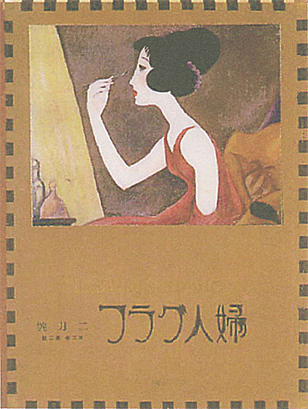 Mudai [No Title]
Mudai [No Title]Fujin gurafu [Women’s Graph] cover (February 1925)
Ito Kisaku (1899-1967)
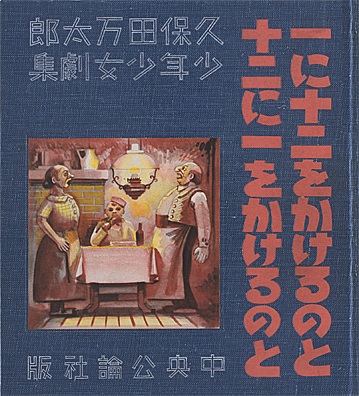
Ichi ni juni o kakeru no to juni ni ichi o kakeru no to [Multiplying One Times Twelve and Multiplying Twelve Times One]
KUBOTA Mantaro shonen-shojo-geki shu [Plays for Boys and Girls by KUBOTA Mantaro]
By KUBOTA Mantaro. Pictures by ITO Kisaku
Chuo Koron Sha 1937. 274 pages. 212 x 190 mm
Collection of the Kanagawa Museum of Modern Literature. Reproduction prohibited without permission.
KUBOTA Mantaro shonen-shojo-geki shu [Plays for Boys and Girls by KUBOTA Mantaro]
By KUBOTA Mantaro. Pictures by ITO Kisaku
Chuo Koron Sha 1937. 274 pages. 212 x 190 mm
Collection of the Kanagawa Museum of Modern Literature. Reproduction prohibited without permission.
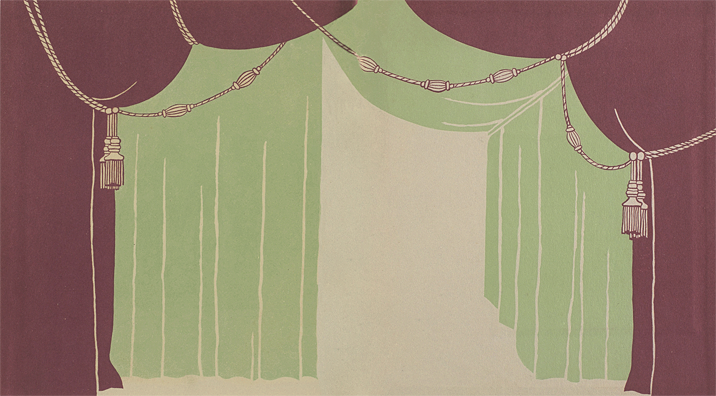
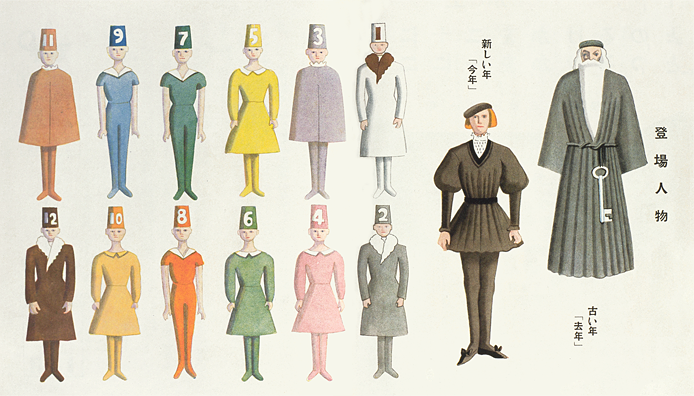
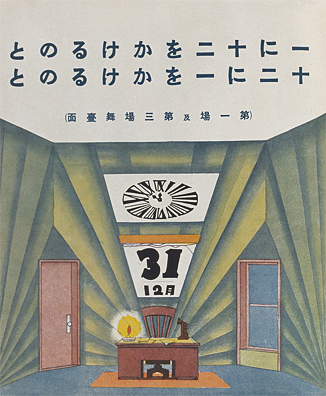
(♪) A good example is the 12-volume series Shogaku kagaku ehon [Picture Books for Elementary Studies] put out by Tokyo Sha in 1937 using avant-garde artists like Yanase Masamu and Murayama Tomoyoshi. (♪)
Murayama Tomoyoshi (1901-1977)
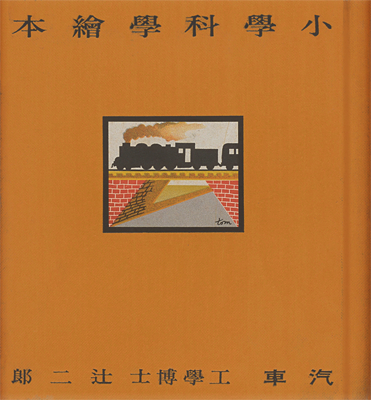
Train
Elementary Science Picture Book Series, vol.4
compiled by TSUJI Jiro. Pictures by MURAYAMA Tomoyoshi
Tokyosha; Tokyo. 1937, 32pages 210 x195mm
Elementary Science Picture Book Series, vol.4
compiled by TSUJI Jiro. Pictures by MURAYAMA Tomoyoshi
Tokyosha; Tokyo. 1937, 32pages 210 x195mm
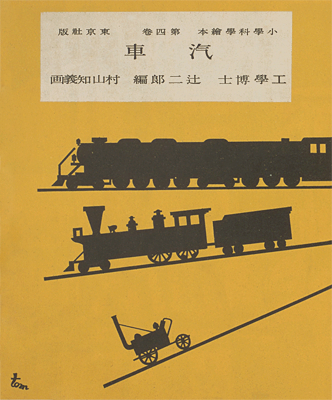
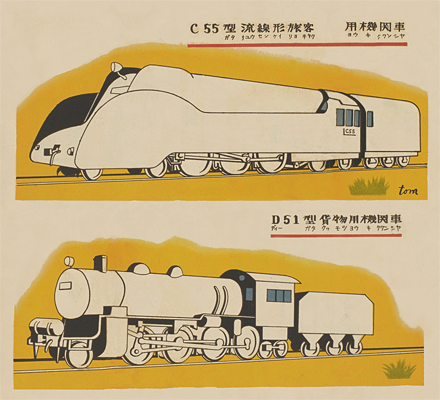
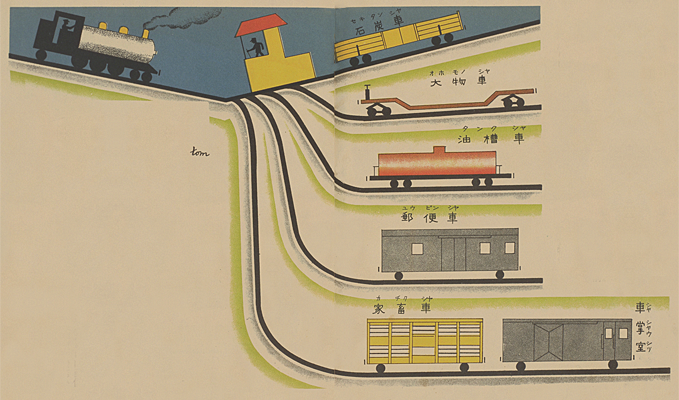
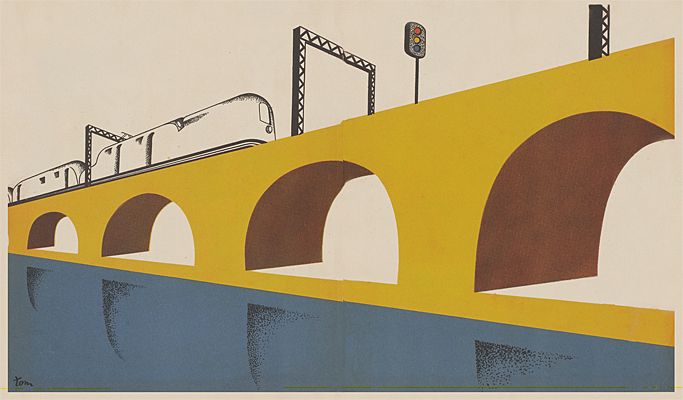
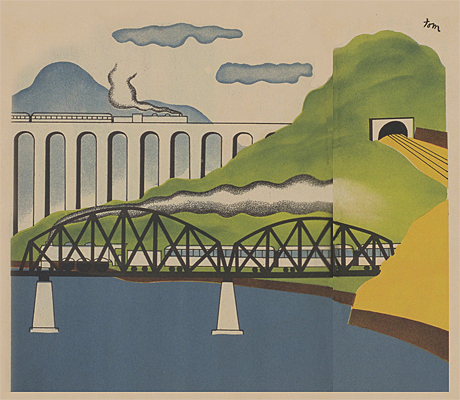
Yanase Masamu (1900-1945)

Rice
Elementary Science Picture Book Series, vol.11
compiled by Bunsuke Suzuki. Pictures by NASTUKAWA Hachiro (Pseudonym of YANASE Masamu)
Tokyosha; Tokyo. 1937, 32pages. 210x195 mm
Elementary Science Picture Book Series, vol.11
compiled by Bunsuke Suzuki. Pictures by NASTUKAWA Hachiro (Pseudonym of YANASE Masamu)
Tokyosha; Tokyo. 1937, 32pages. 210x195 mm



Yamashita Ken'ichi

Coal
Elementary Science Picture Book Series, vol.9
compiled by MITSUKURI Shinroku. Pictures by YAMASHITA Ken'ichi
Tokyosha; Tokyo. 1937, 32pages. 212x195 mm
Elementary Science Picture Book Series, vol.9
compiled by MITSUKURI Shinroku. Pictures by YAMASHITA Ken'ichi
Tokyosha; Tokyo. 1937, 32pages. 212x195 mm



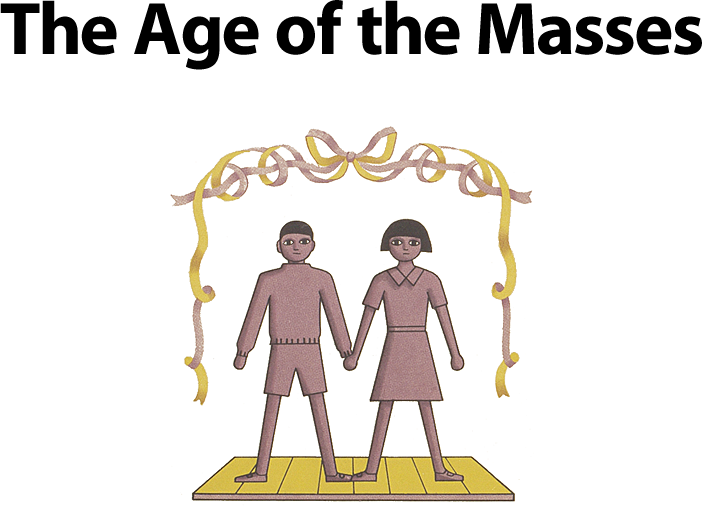
Ichi ni juni o kakeru no to juni ni ichi o kakeru no to [Multiplying One Times Twelve and Multiplying Twelve Times One]
KUBOTA Mantaro shonen-shojo-geki shu [Plays for Boys and Girls by KUBOTA Mantaro]
By KUBOTA Mantaro. Pictures by ITO Kisaku
Chuo Koron Sha 1937. 274 pages. 212 x 190 mm
Collection of the Kanagawa Museum of Modern Literature. Reproduction prohibited without permission.
KUBOTA Mantaro shonen-shojo-geki shu [Plays for Boys and Girls by KUBOTA Mantaro]
By KUBOTA Mantaro. Pictures by ITO Kisaku
Chuo Koron Sha 1937. 274 pages. 212 x 190 mm
Collection of the Kanagawa Museum of Modern Literature. Reproduction prohibited without permission.
Audio controller
(♪) In this era history began to revolve around the masses. The energies of the masses were manipulated, as rising fascist forces sought to turn the rudder of history, plunging the world in the tragedies of World War II. (♪)
(♪) Art, nevertheless, did serve the masses. Even in the short heyday of modernism, there was hope for progress of humankind and various activities were undertaken that merited passing on to future generations. (♪)
| Year | Event and Picture Book |
|---|---|
| 1922 | In Italy, fascist government formed under Benito Mussolini Union of Soviet Socialist Republics established  About Two Squares  Kodomo no kuni magazine |
| 1924 | André Breton, the Surrealist Manifesto Stories of Paradise |
| 1925 |  The Circus  Yesterday and Today |
| 1928 |  Millions of Cats |
| 1929 | Great Depression begins in New York Joseph Stalin regime established.  The Magic Boat  Gulliver’s Travels  Ivan Ivanovich Samovar |
| 1931 | Manchurian Incident marks beginning of Japanese aggression in China. |
| 1932 |  Men at Work |
| 1933 | Adolf Hitler takes power Bauhaus closed by Nazis The New Deal begins |
| 1934 |  My Ball |
| 1937 | Second Sino-Japanese War begins Rice  Coal  Train ![Front cover of “Ichi ni juni o kakeru no to juni ni ichi o kakeru no to [Multiplying One Times Twelve and Multiplying Twelve Times One]”](../_media/image/commentary/parts/SEEN8-2-00.png) Ichi ni juni o kakeru no to juni ni ichi o kakeru no to [Multiplying One Times Twelve and Multiplying Twelve Times One] |
| 1939 | World War II begins |
